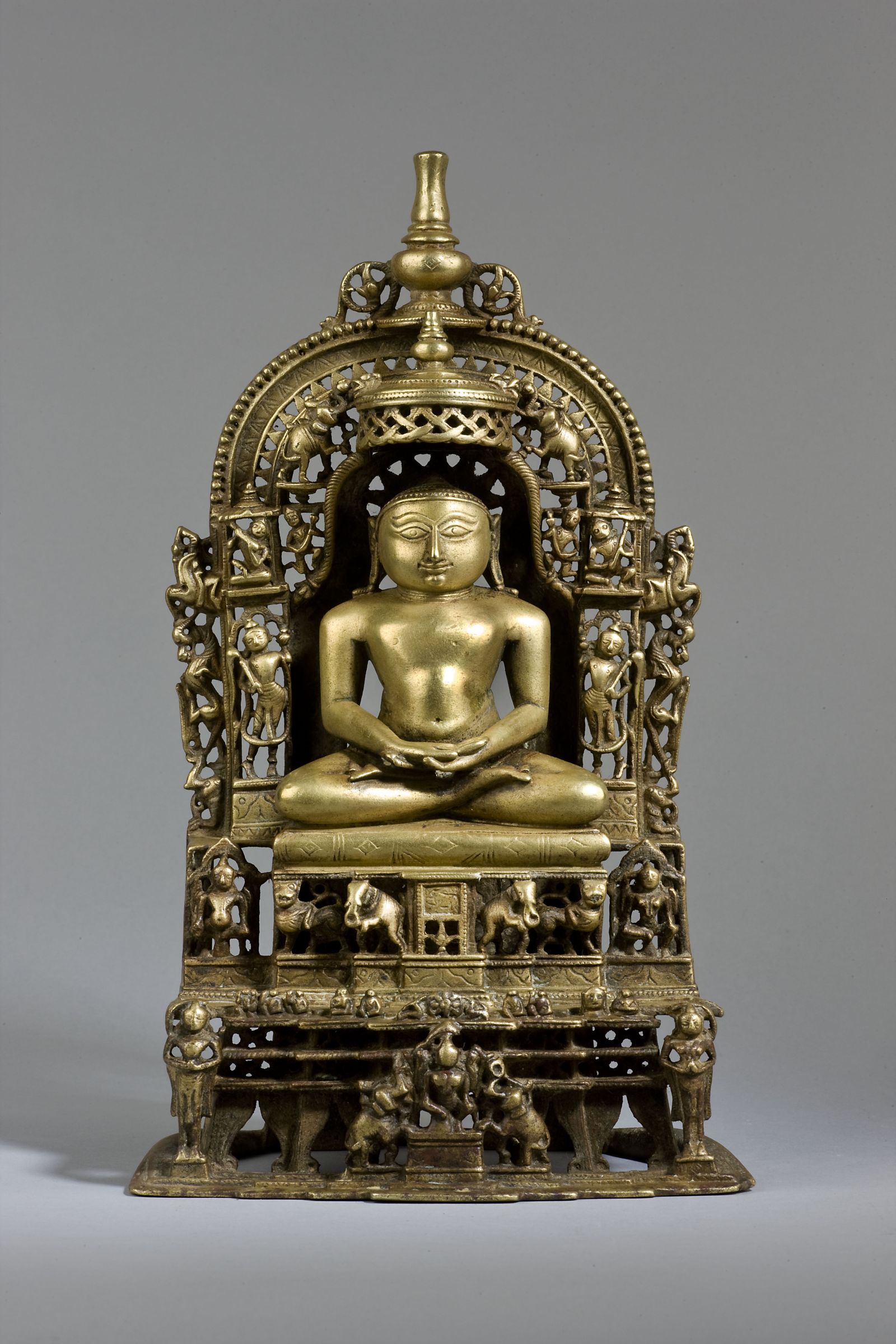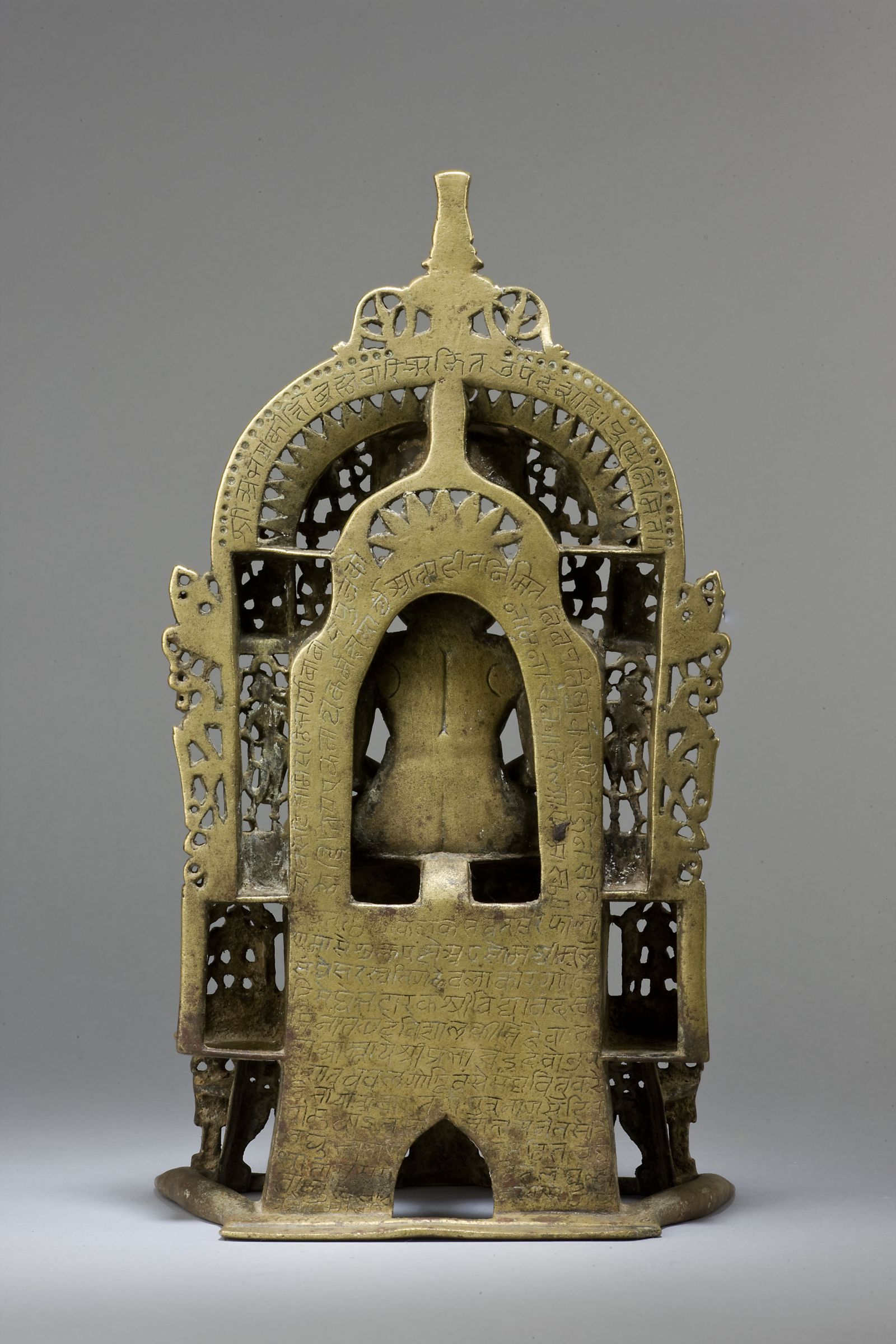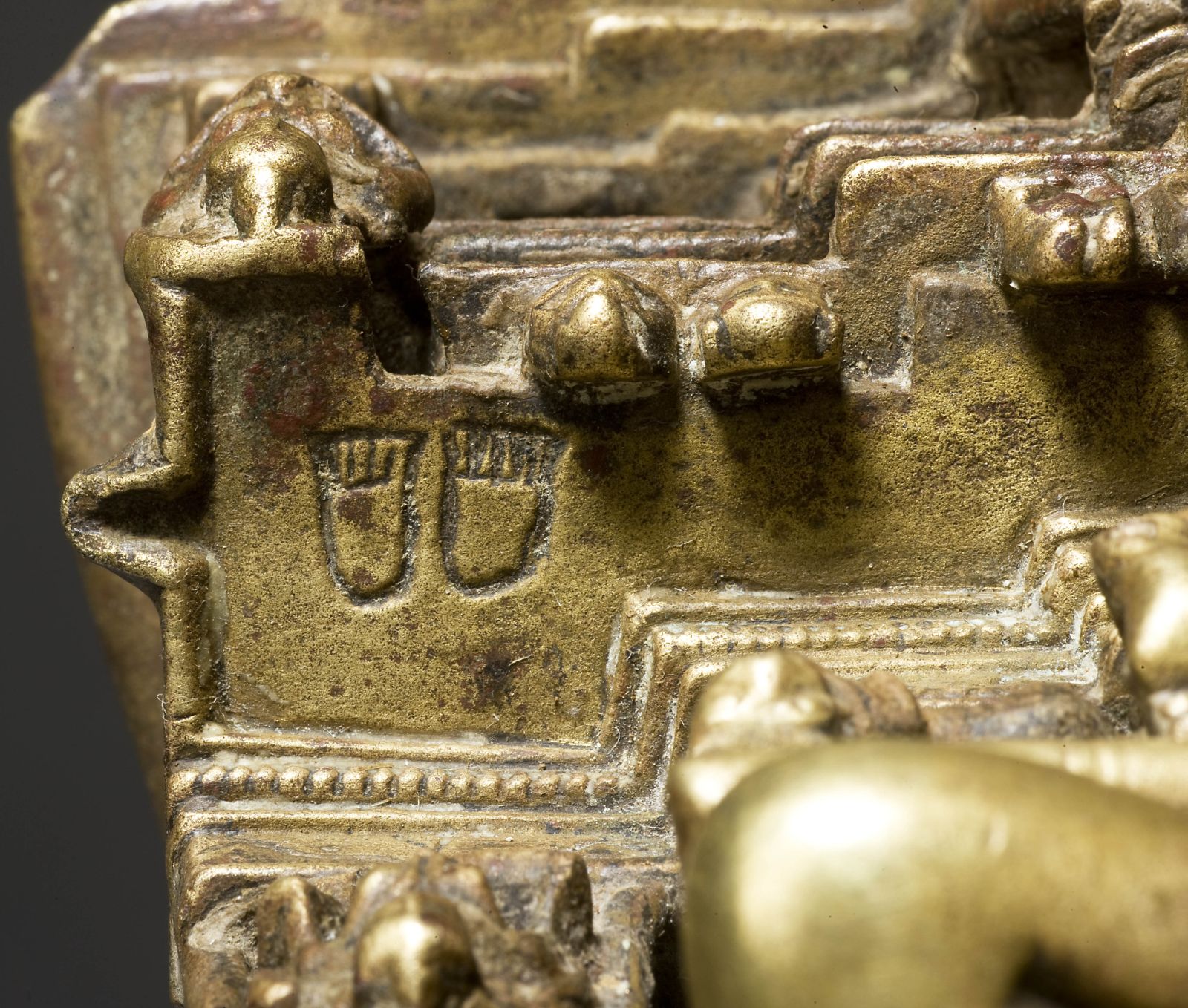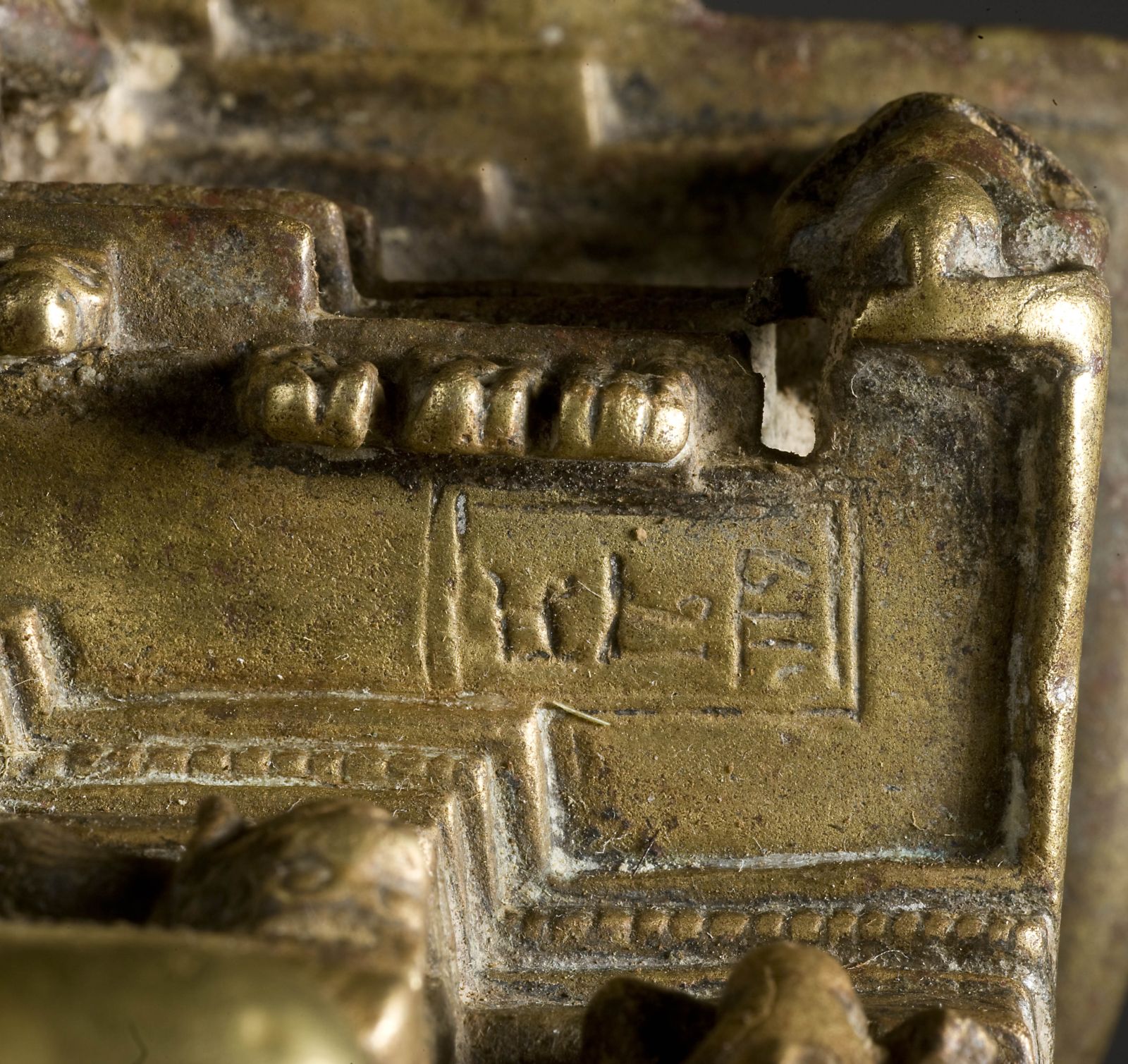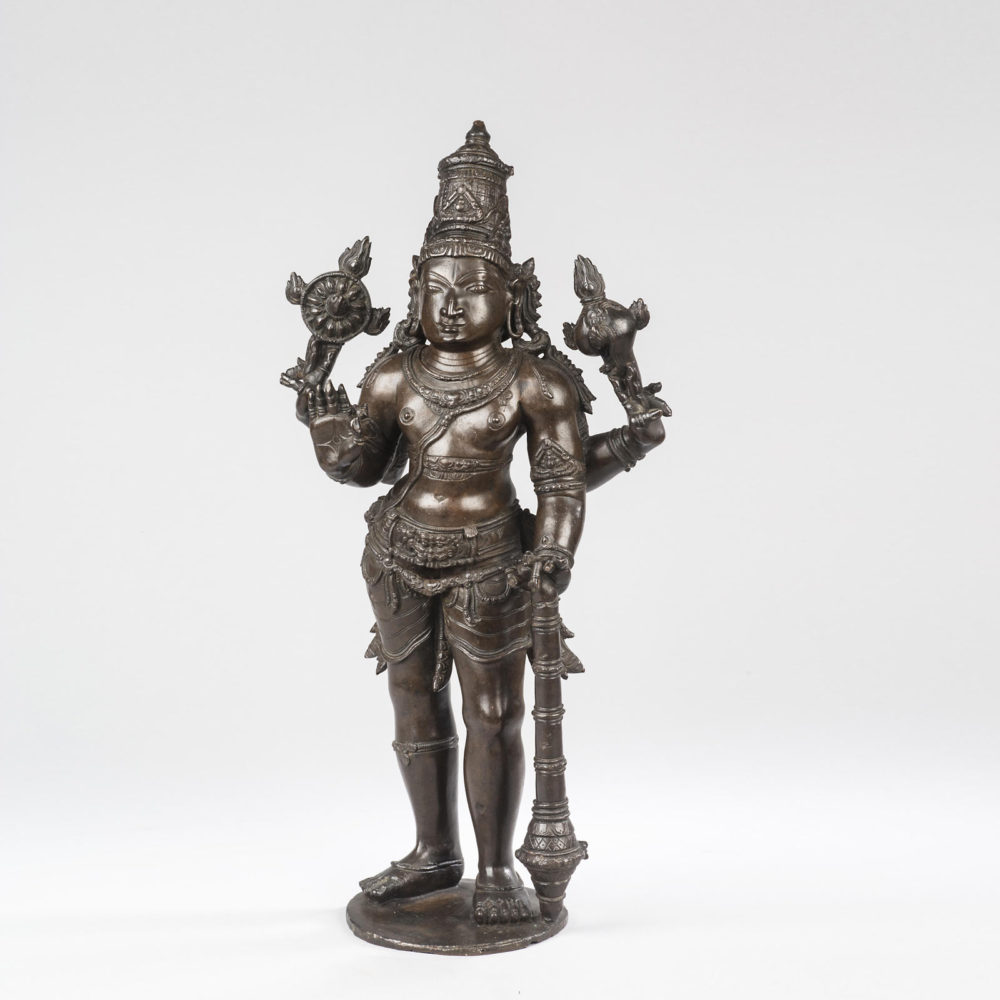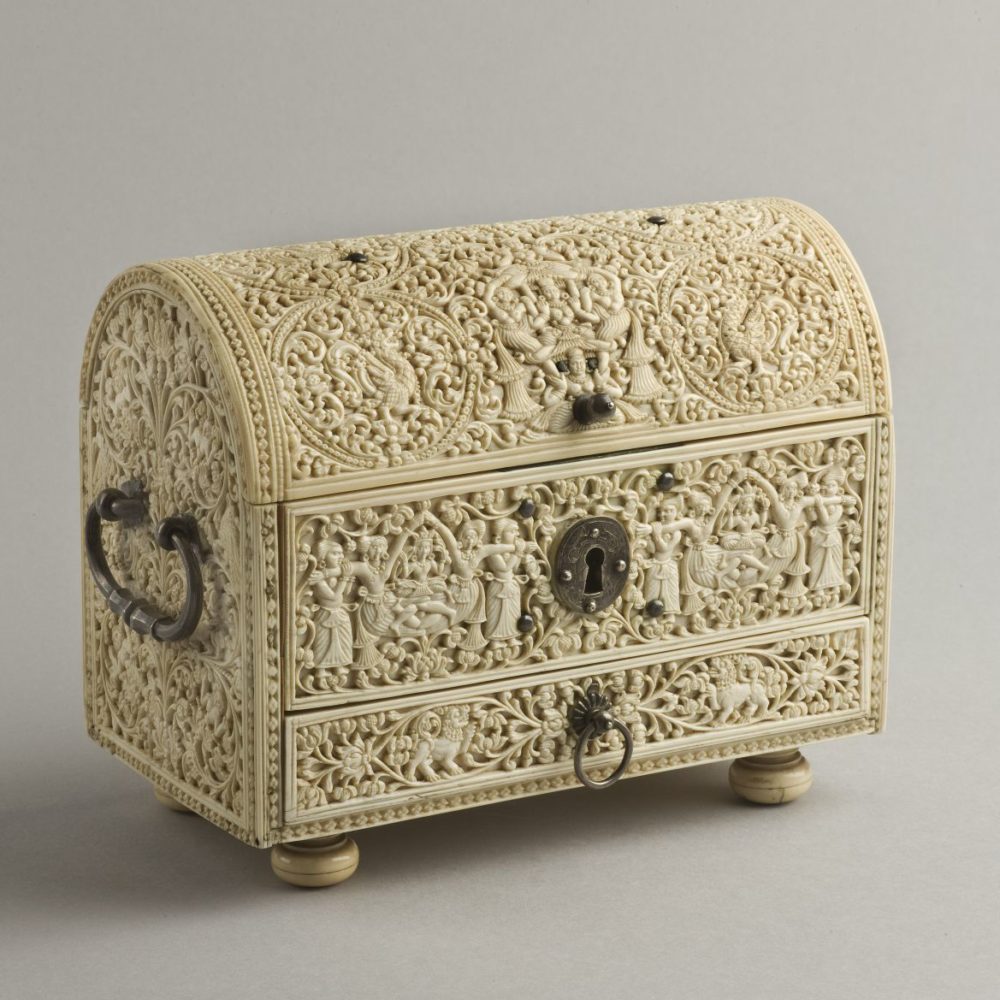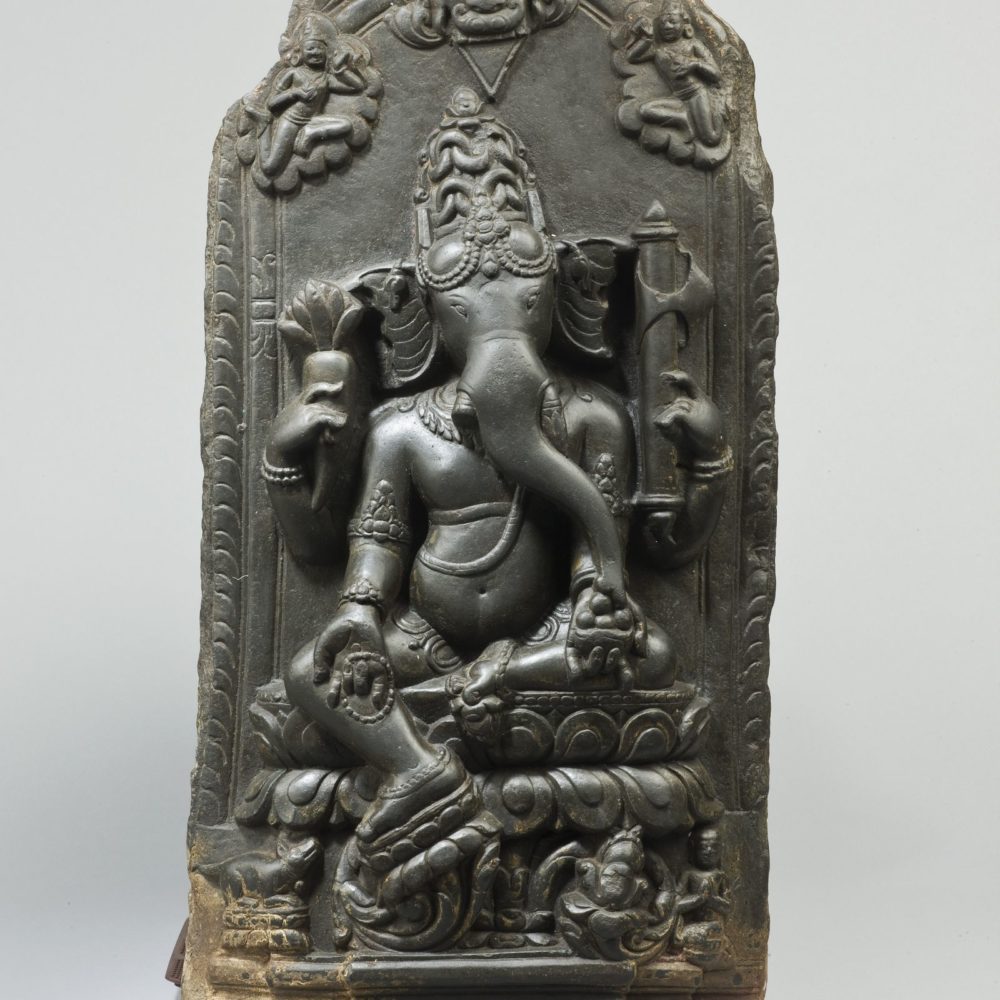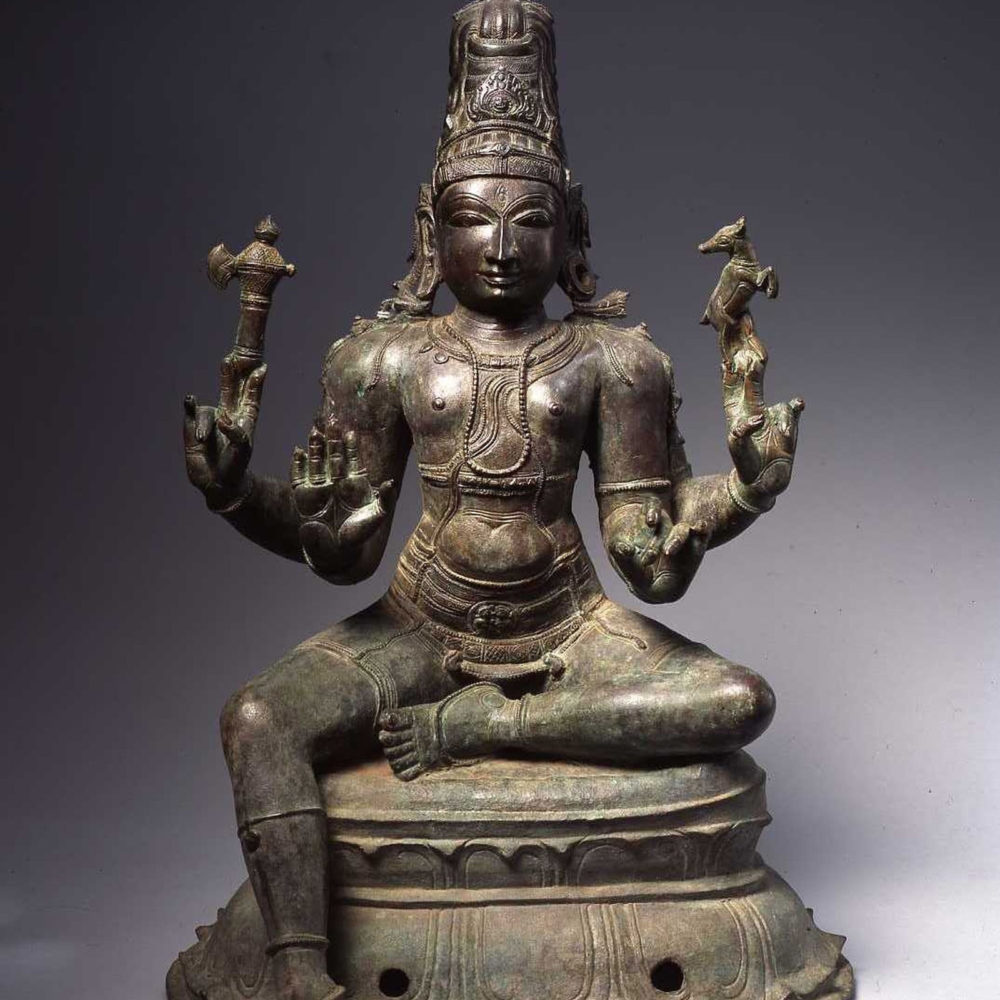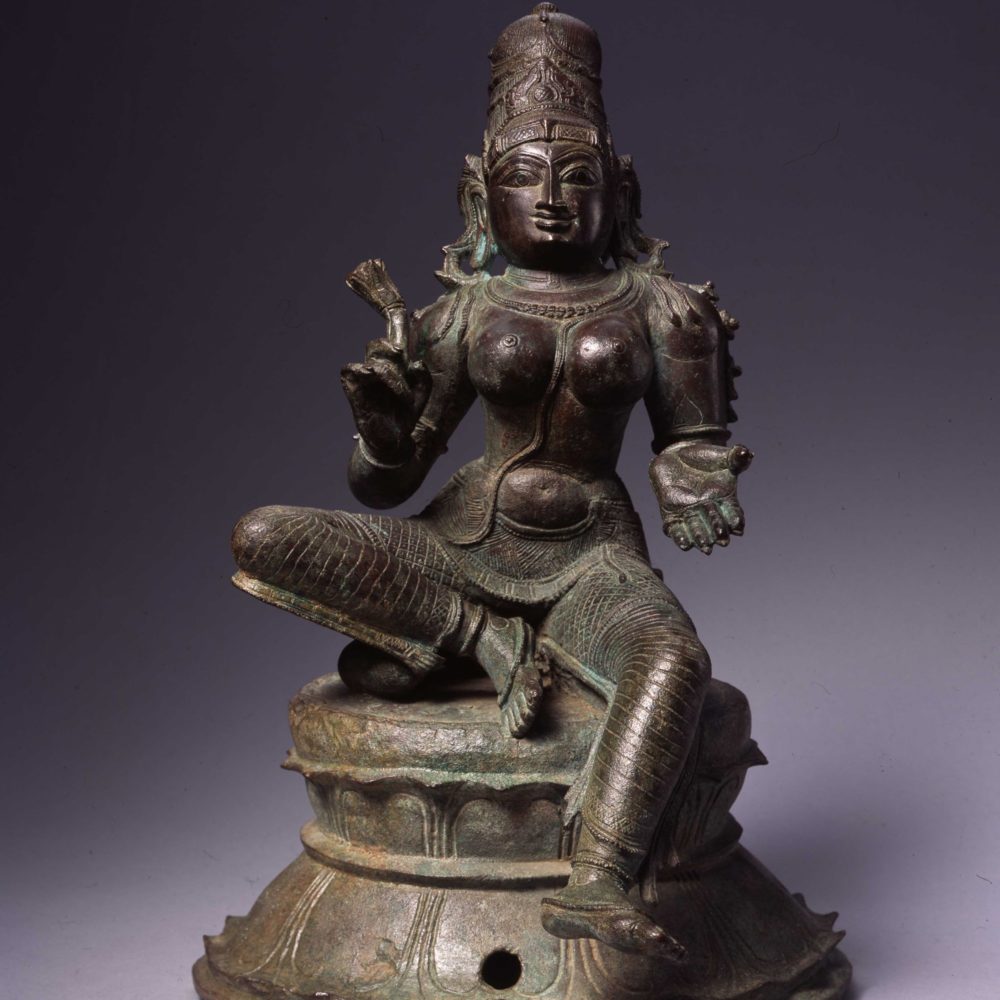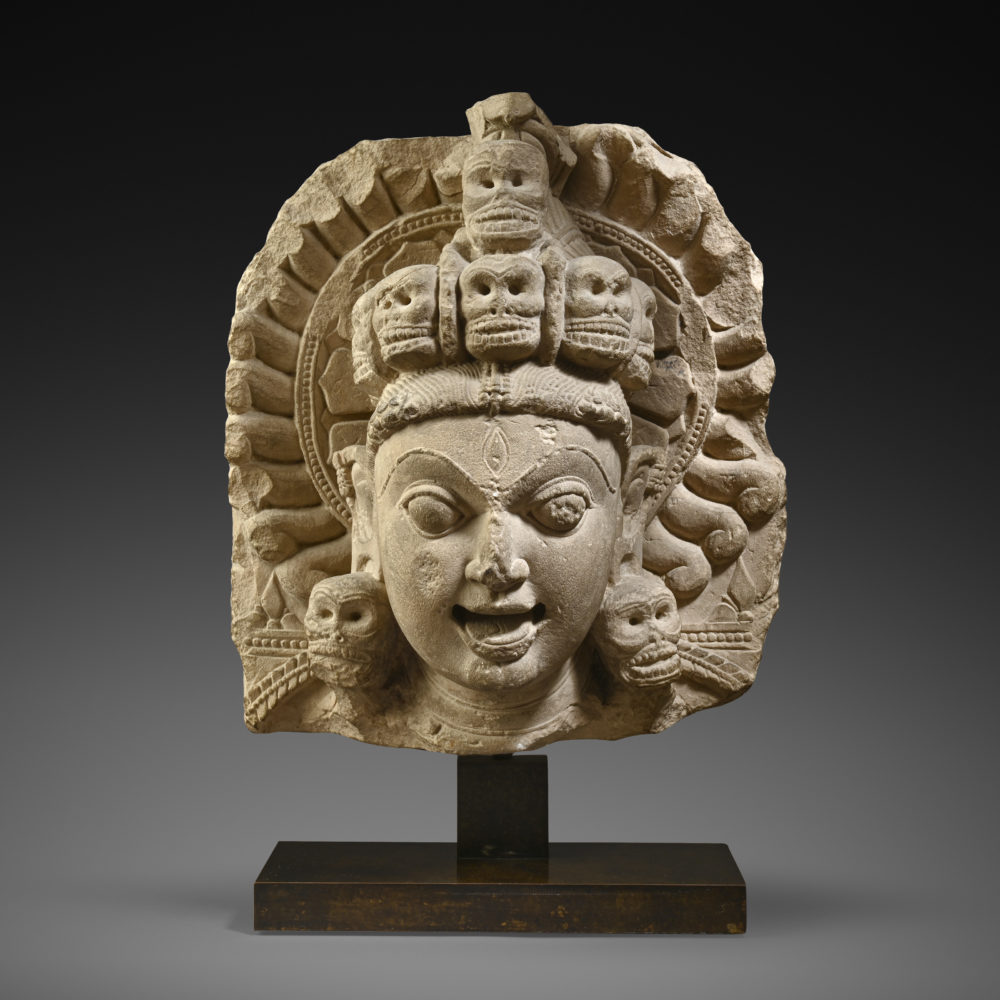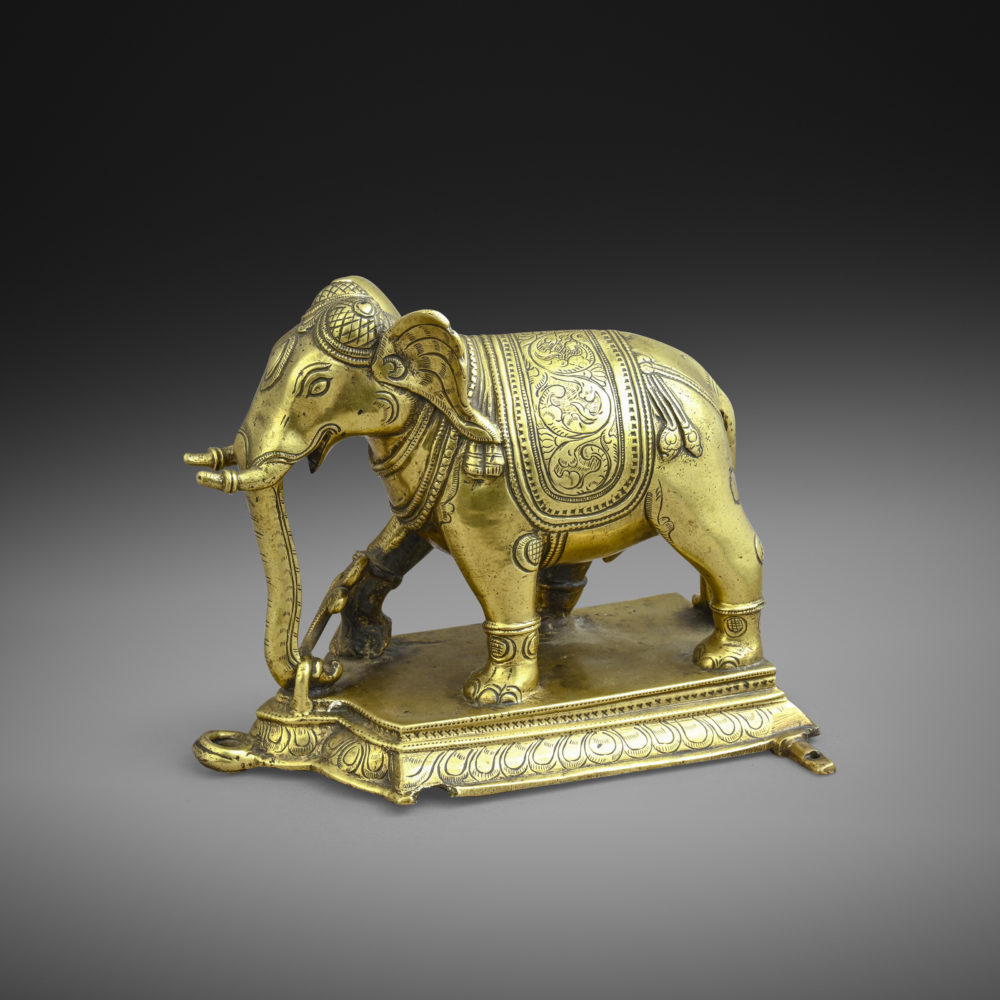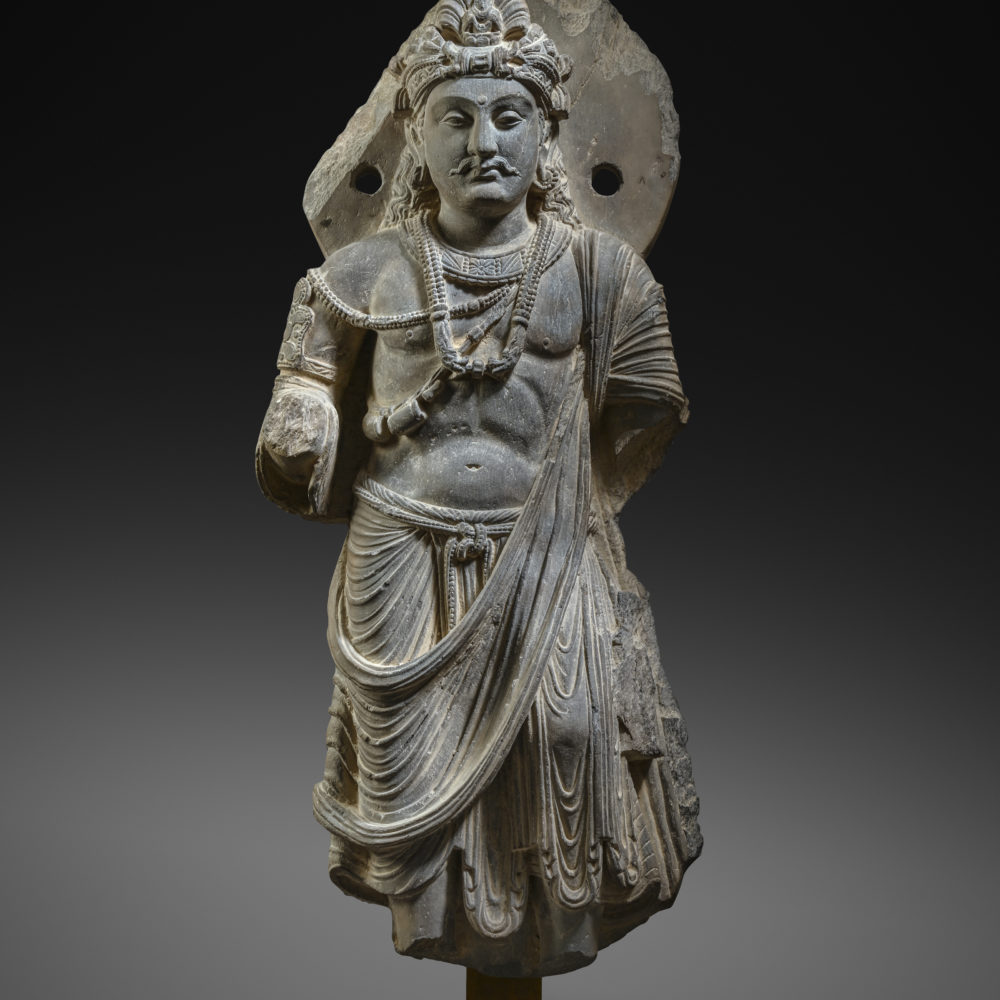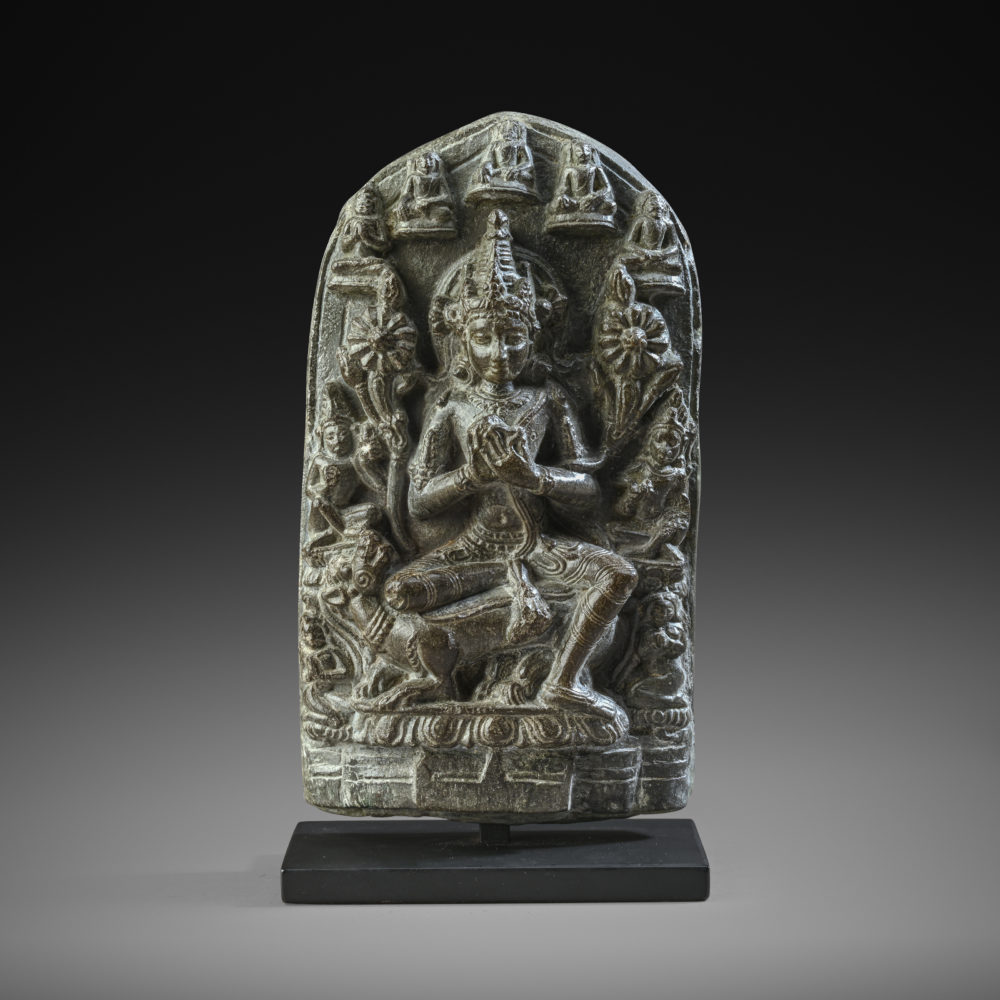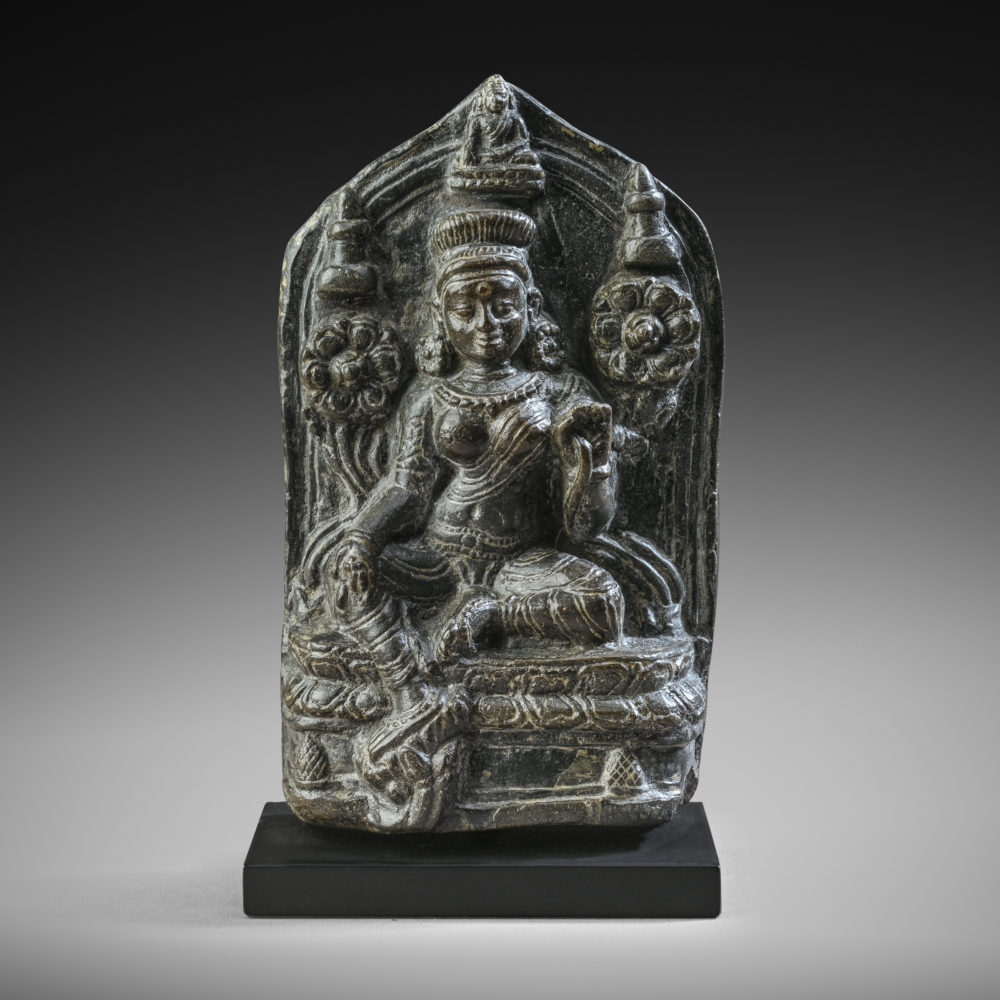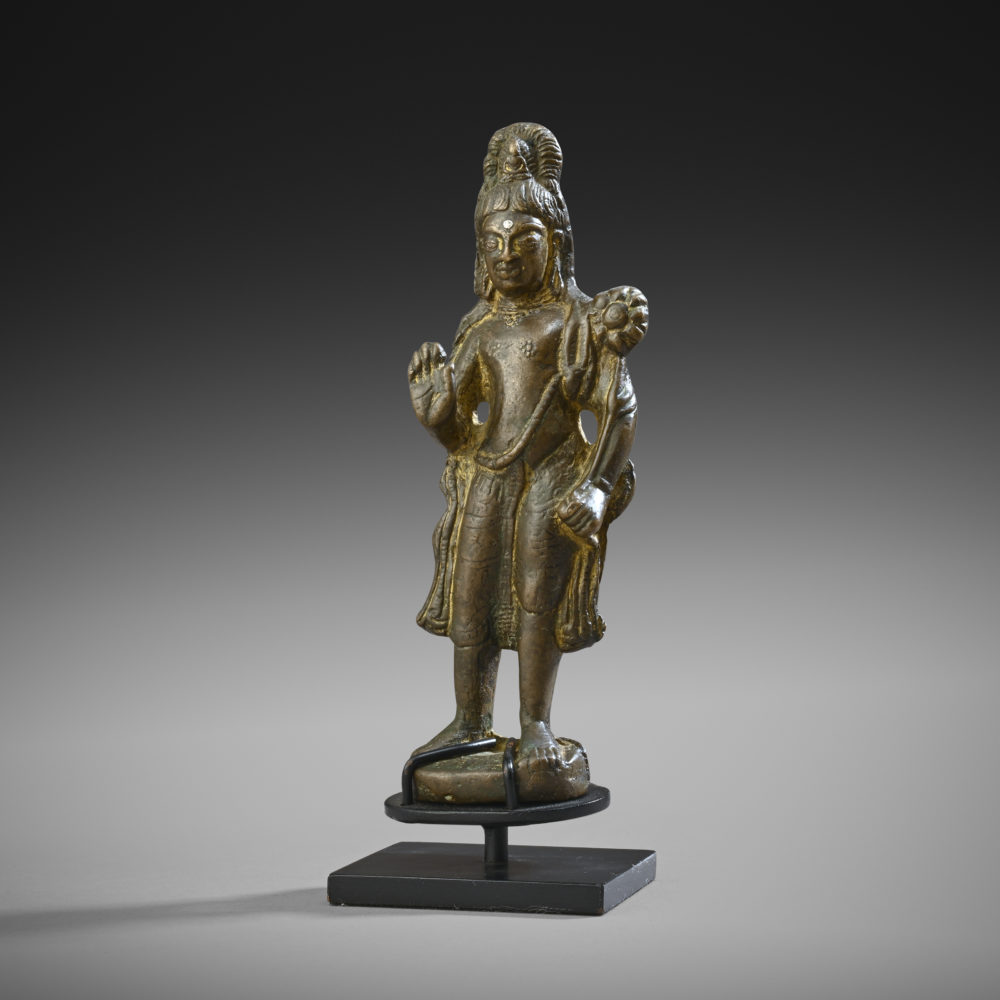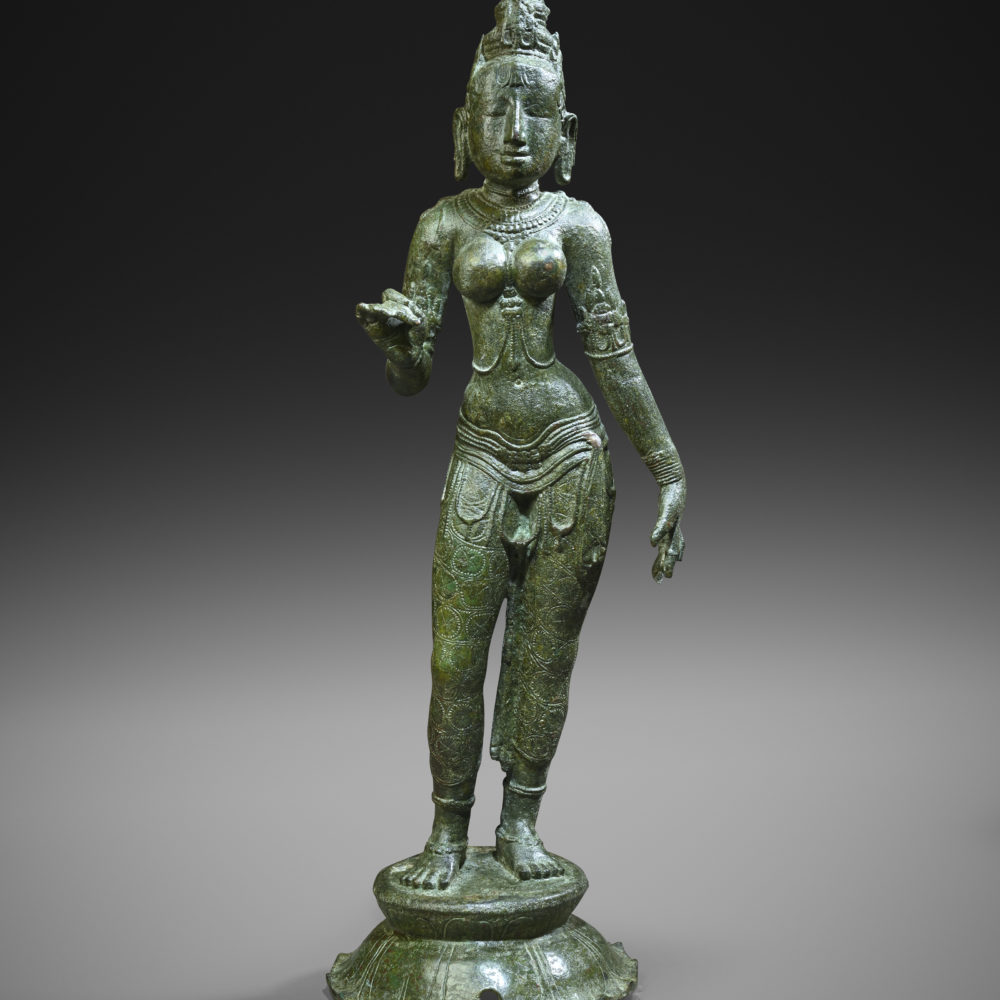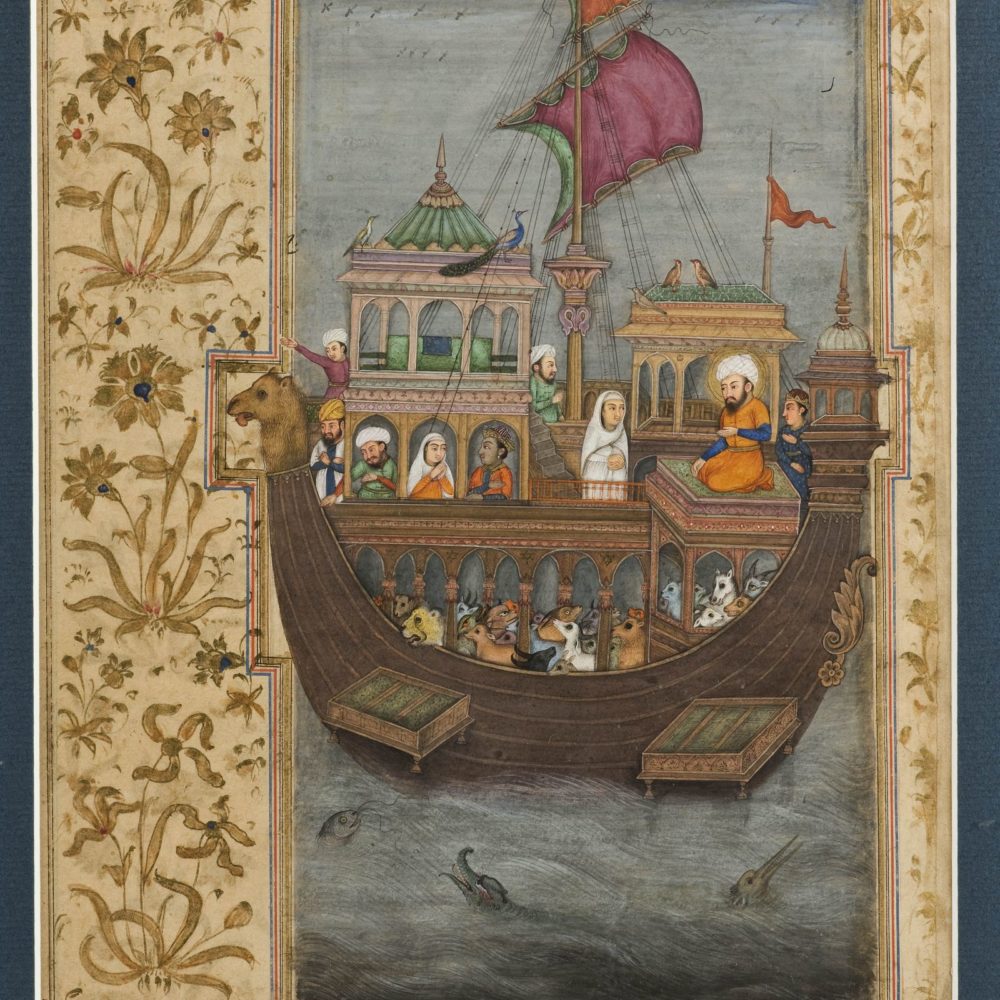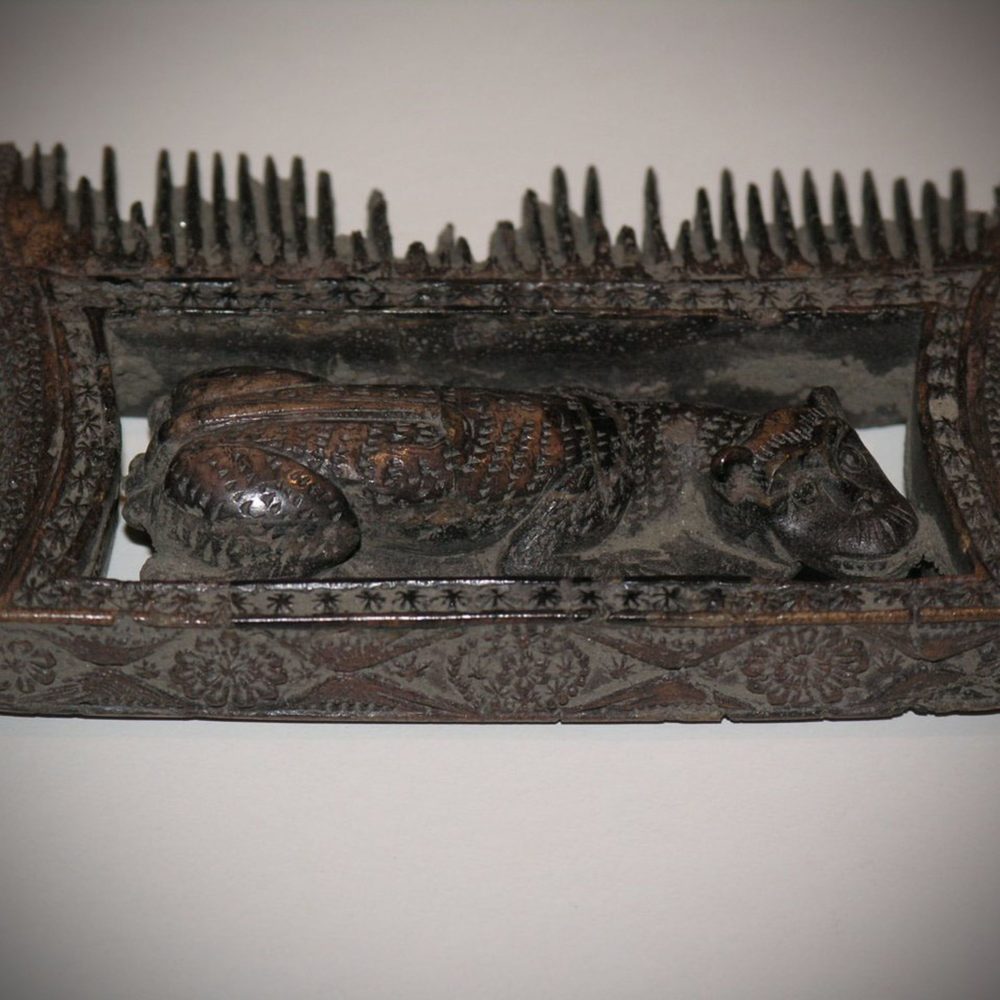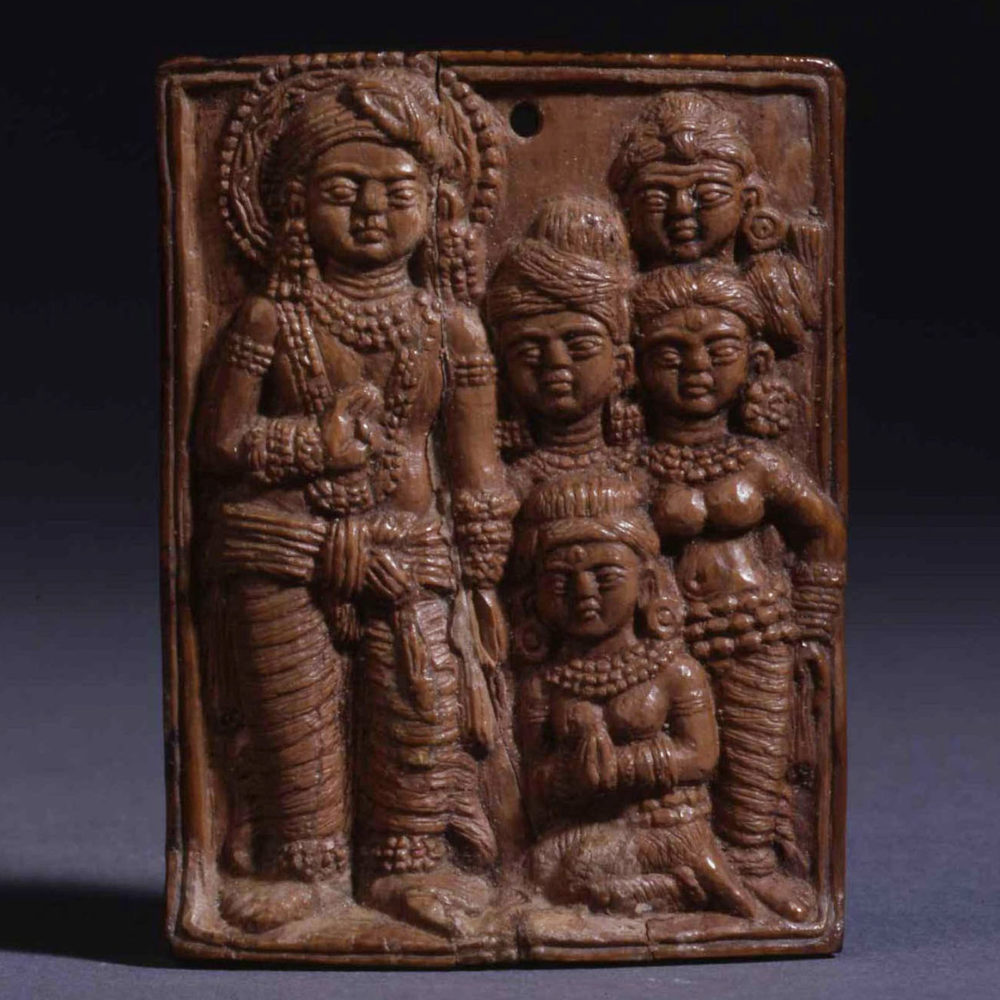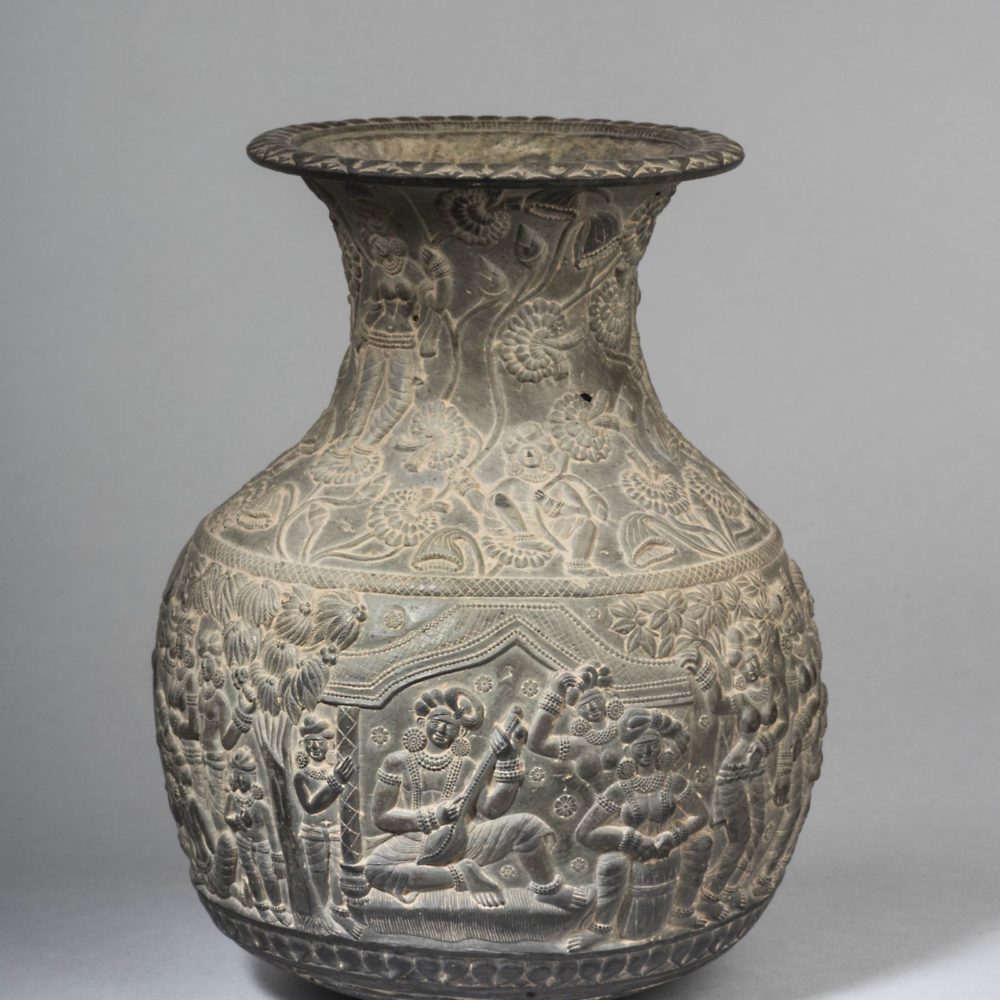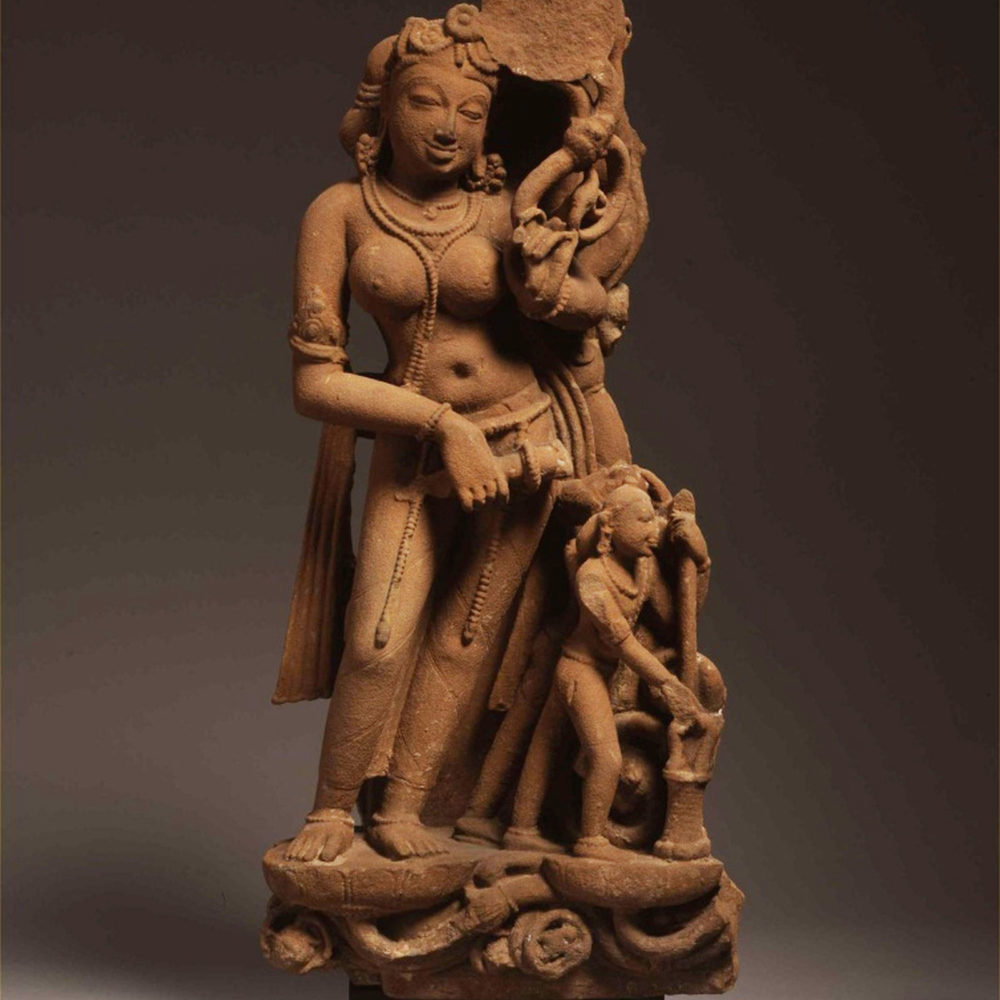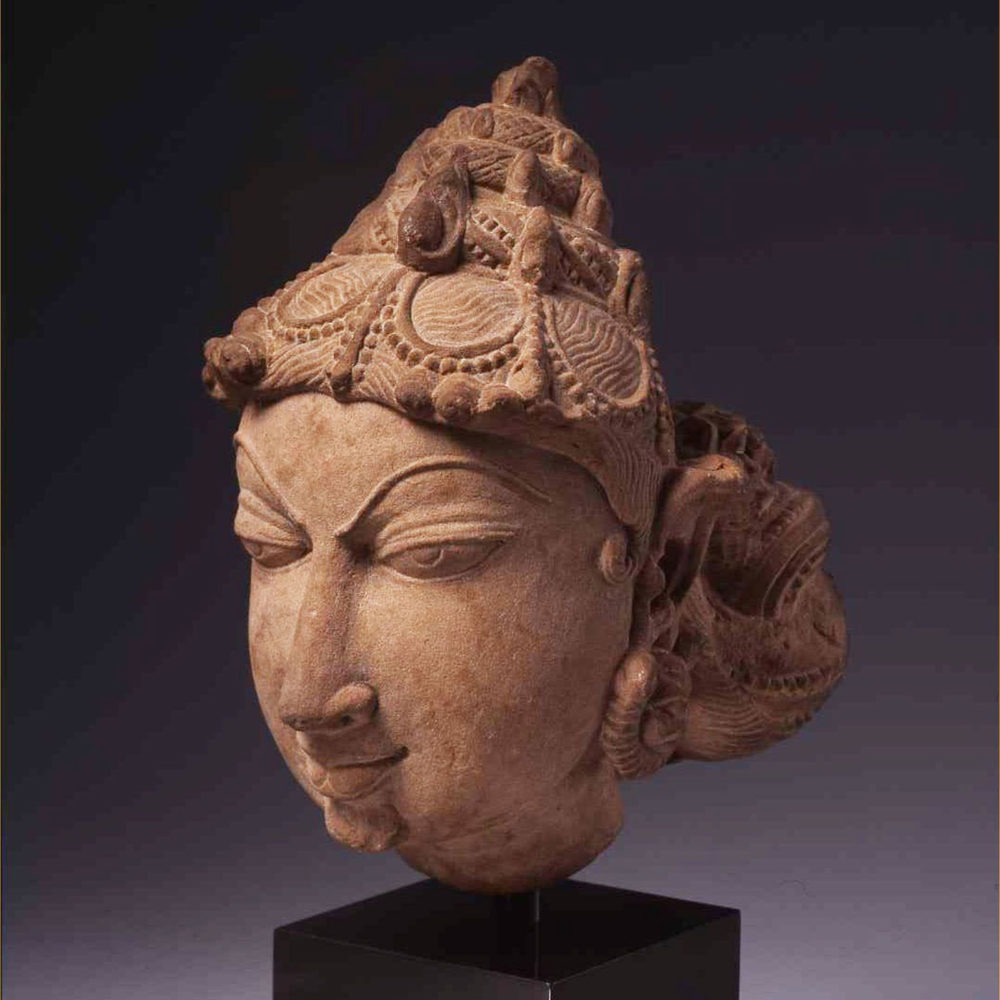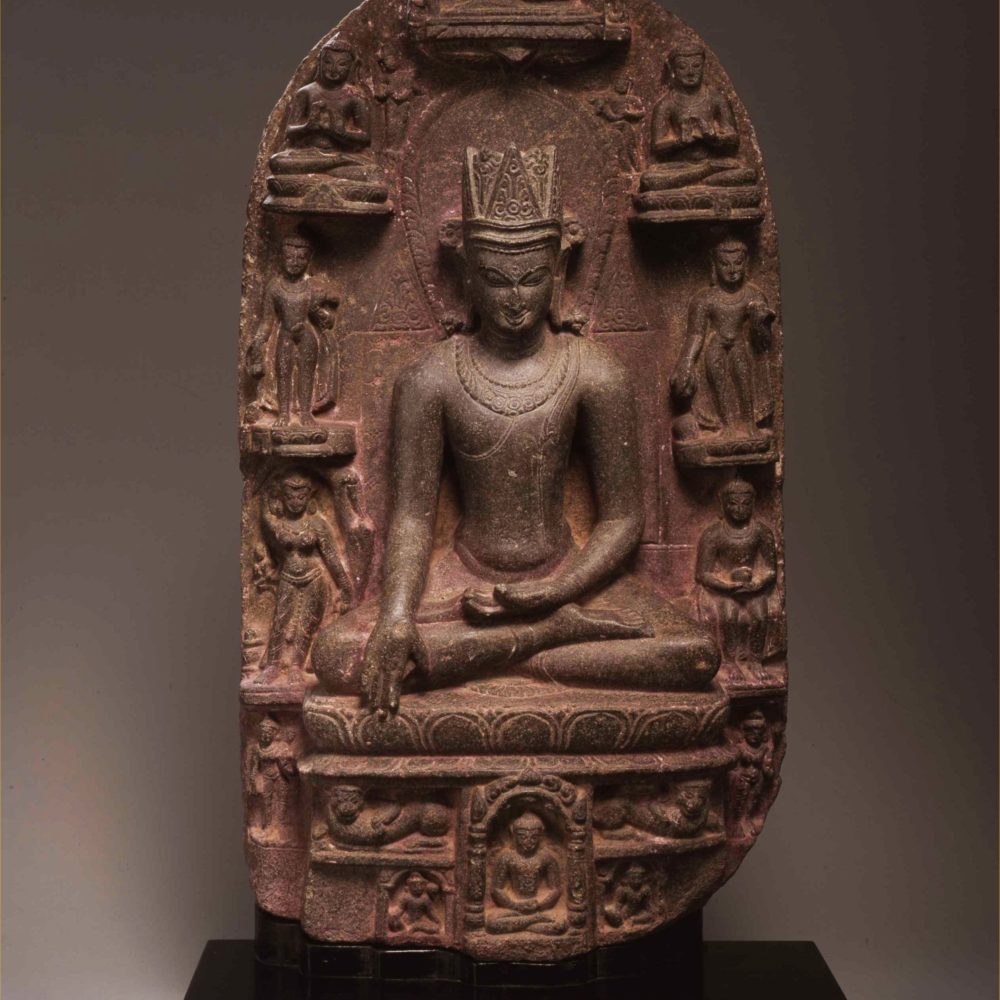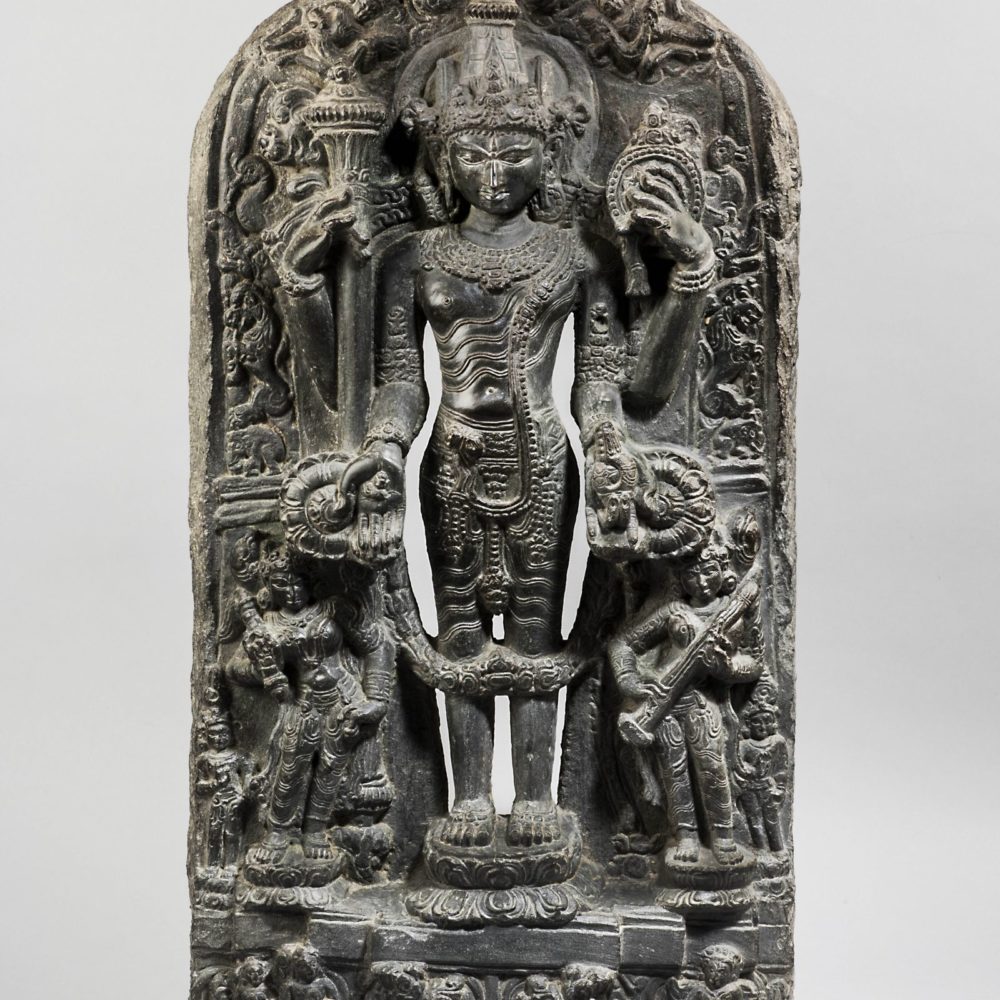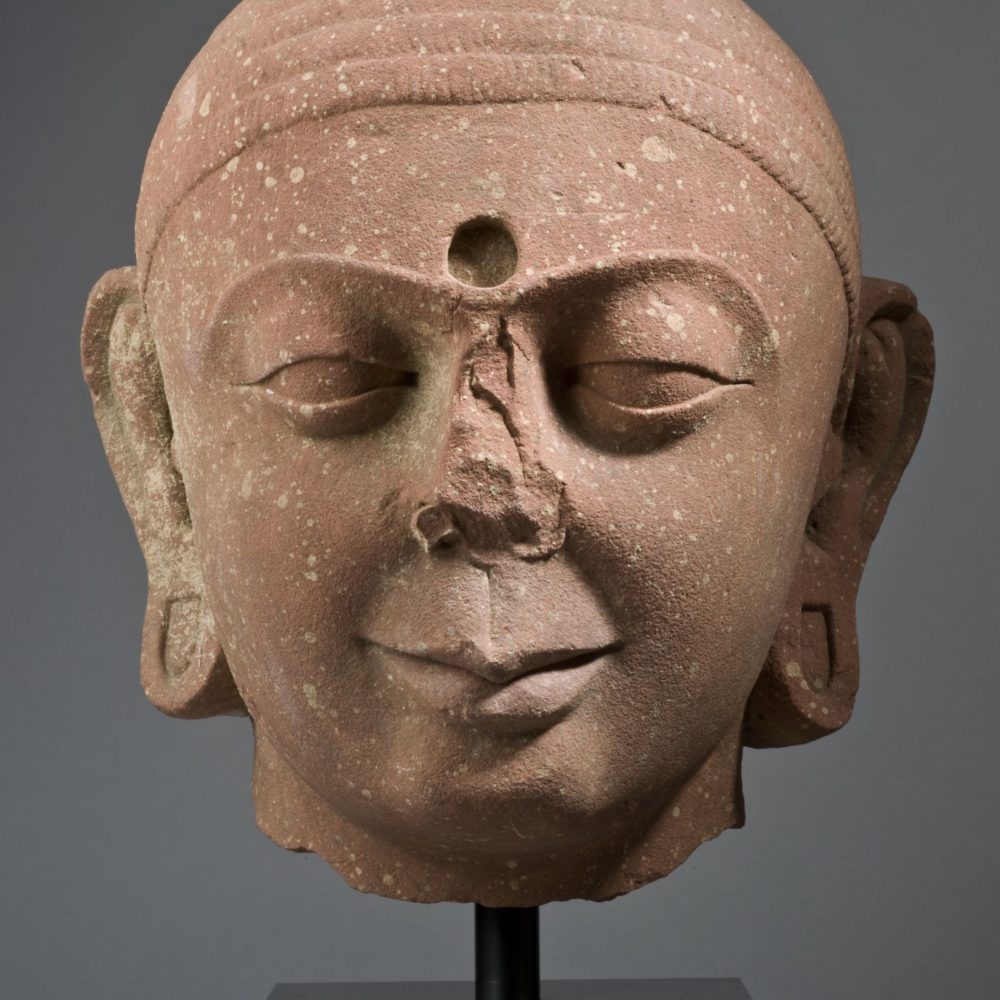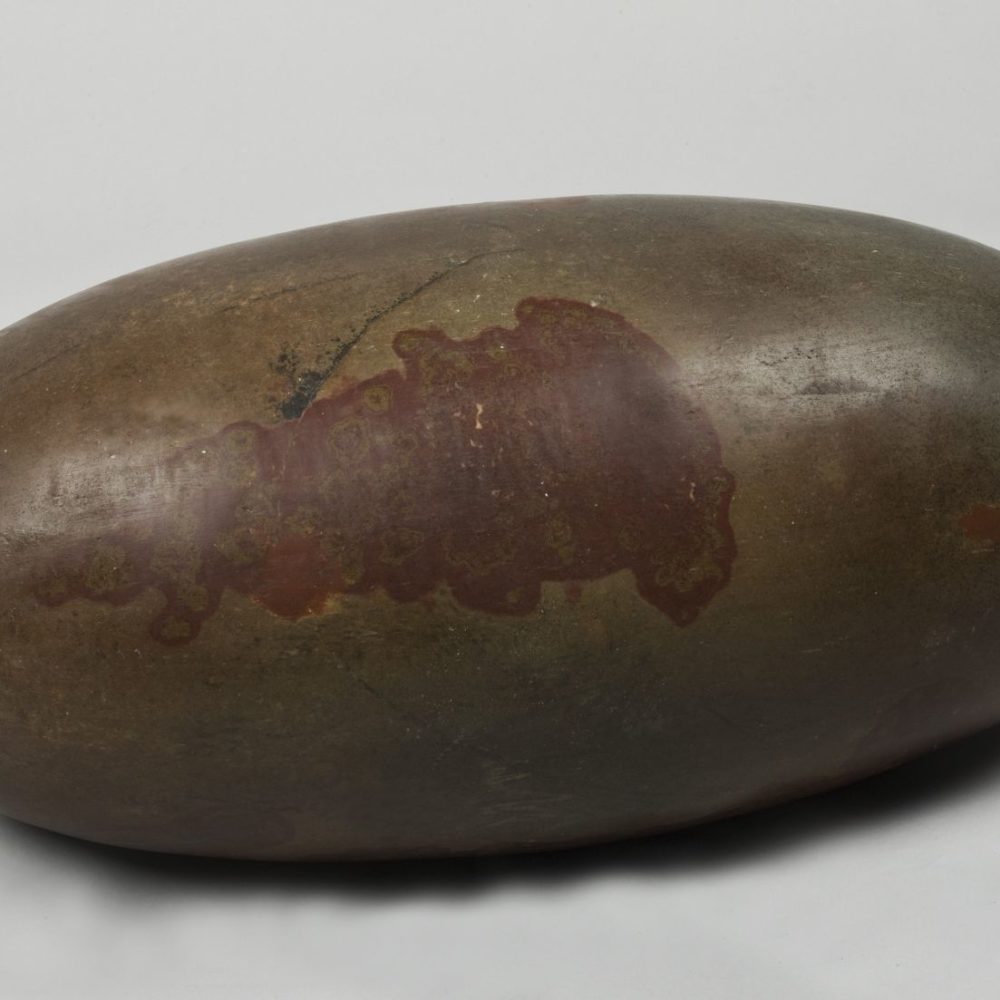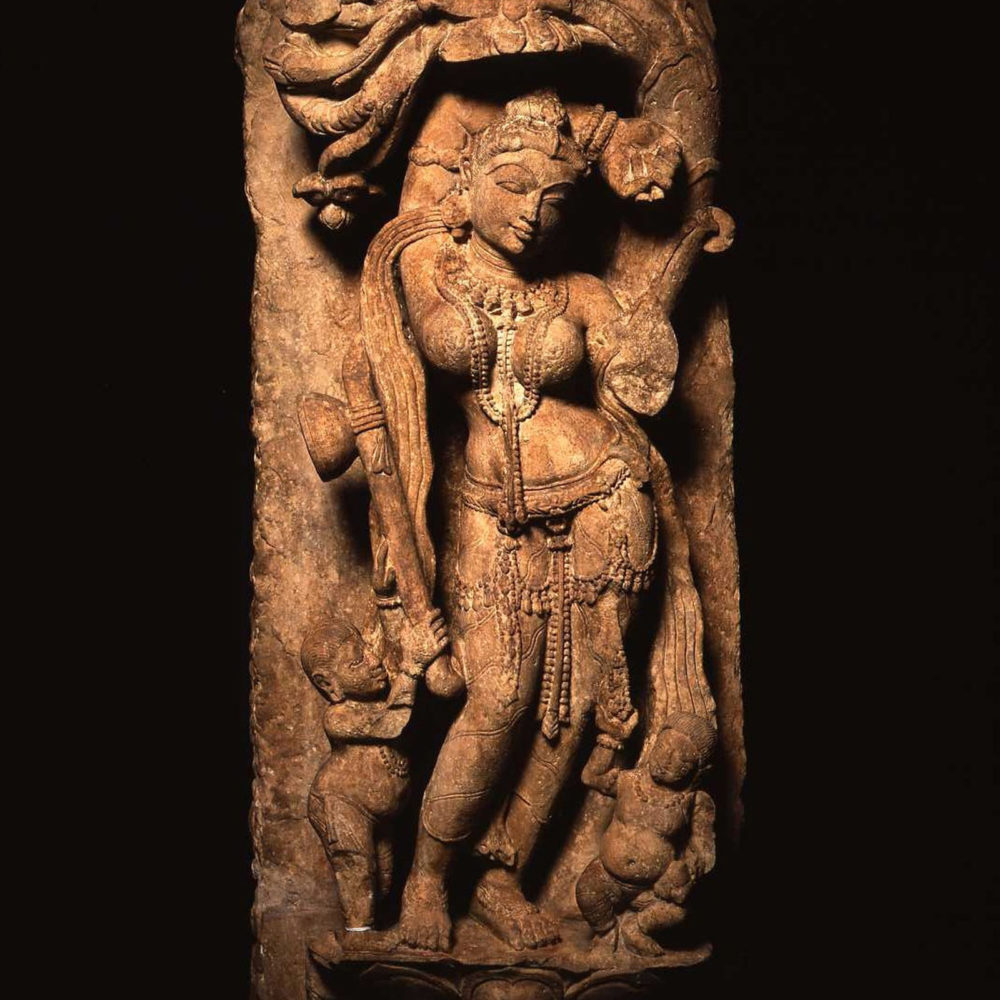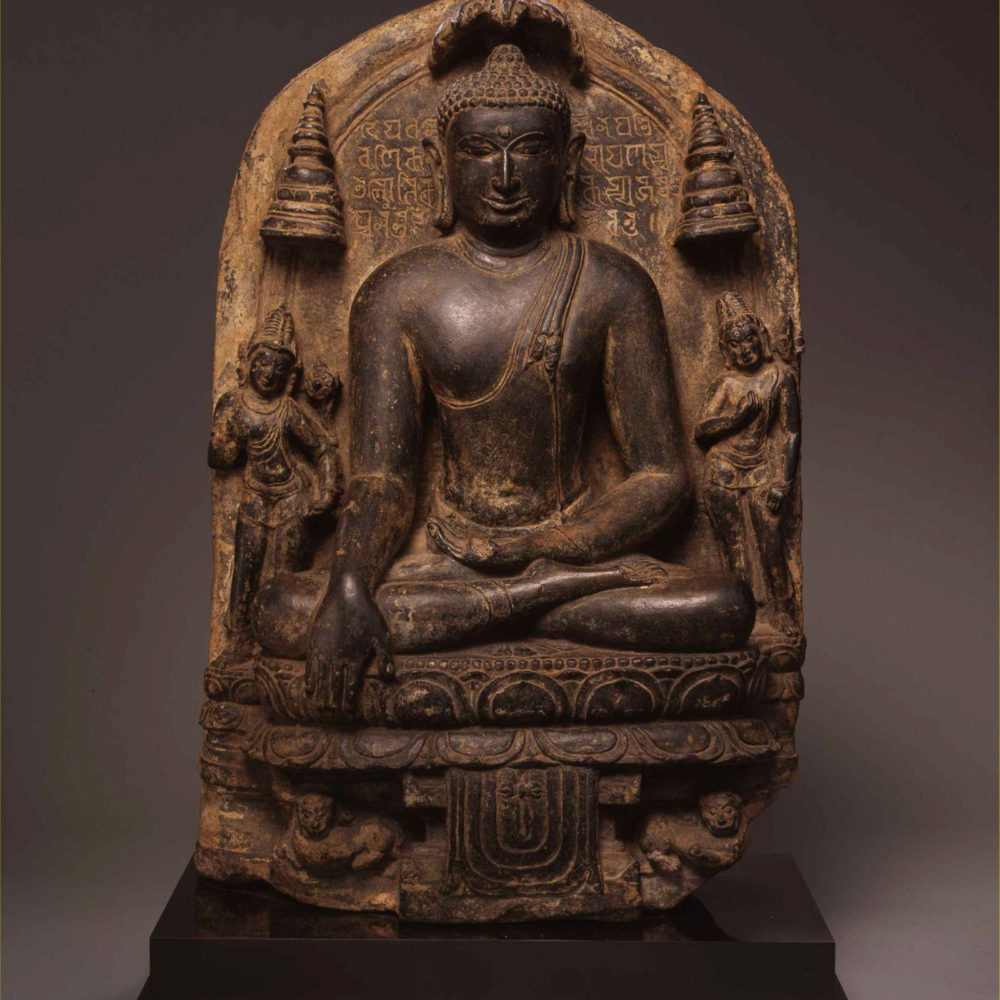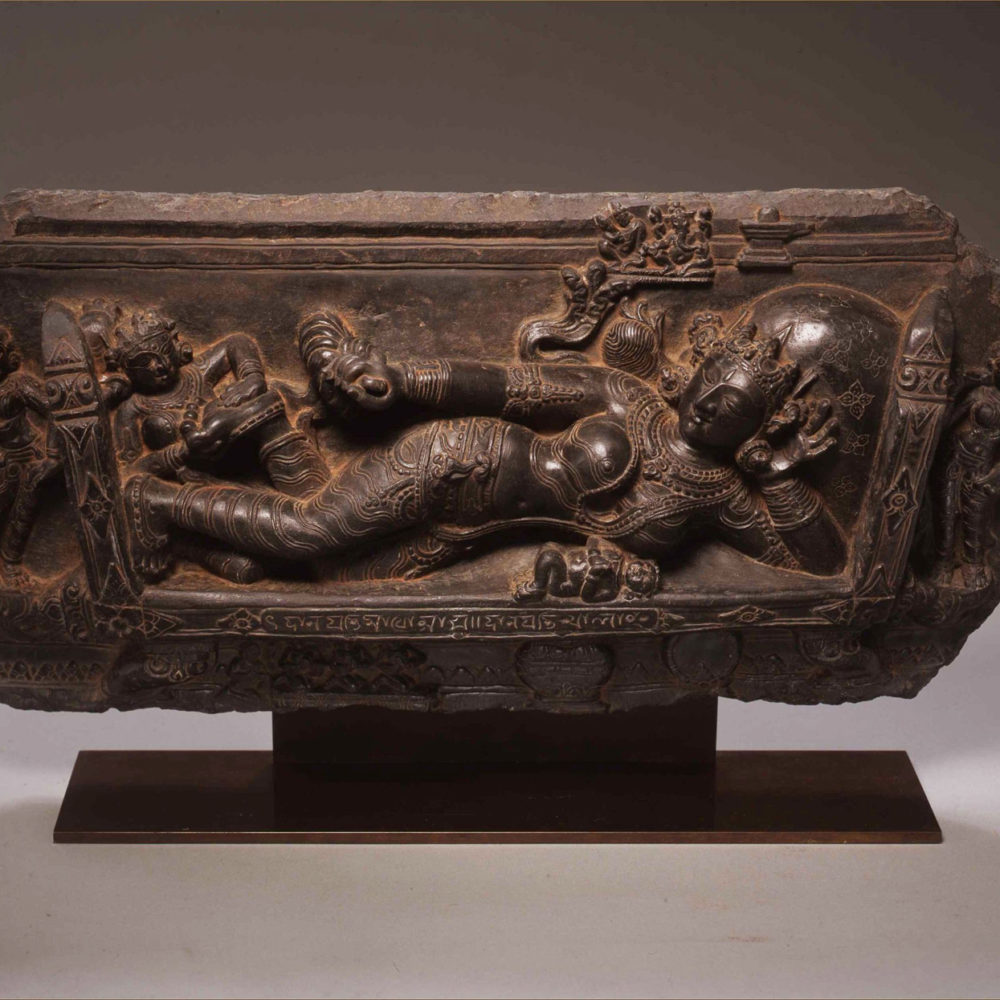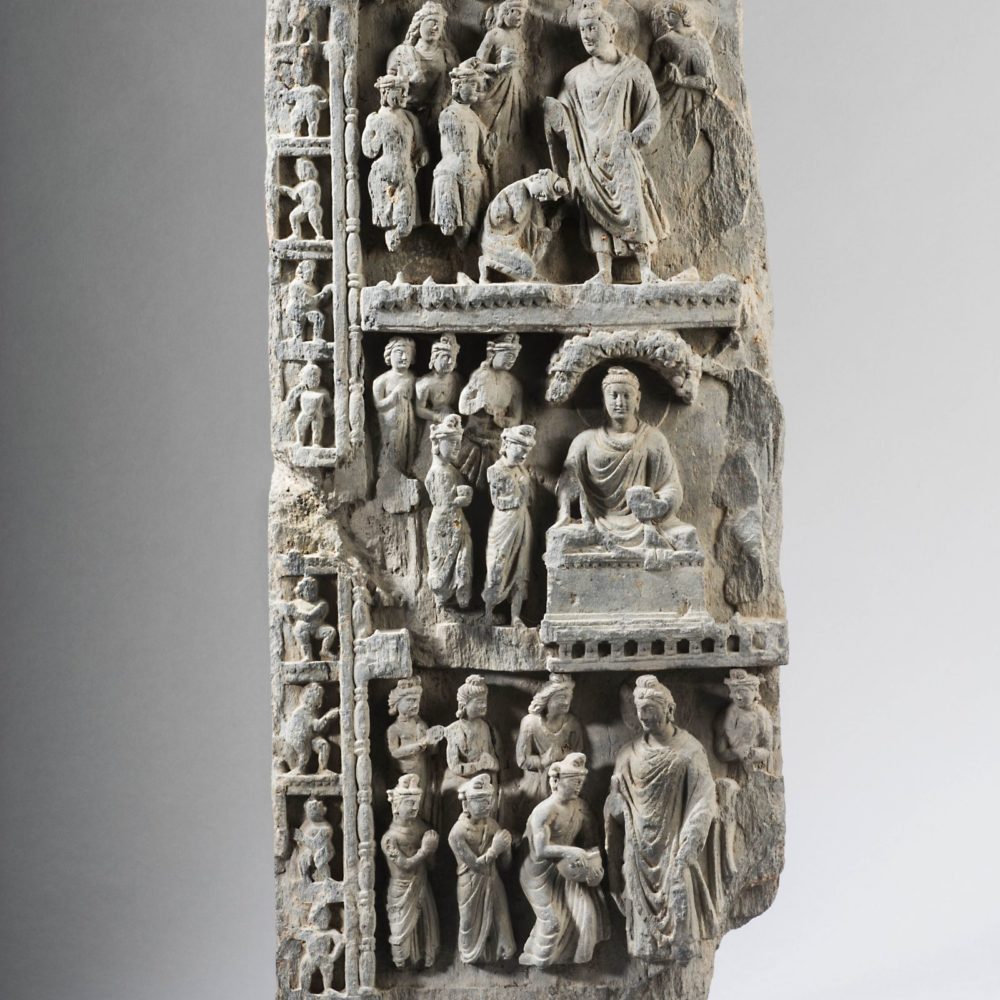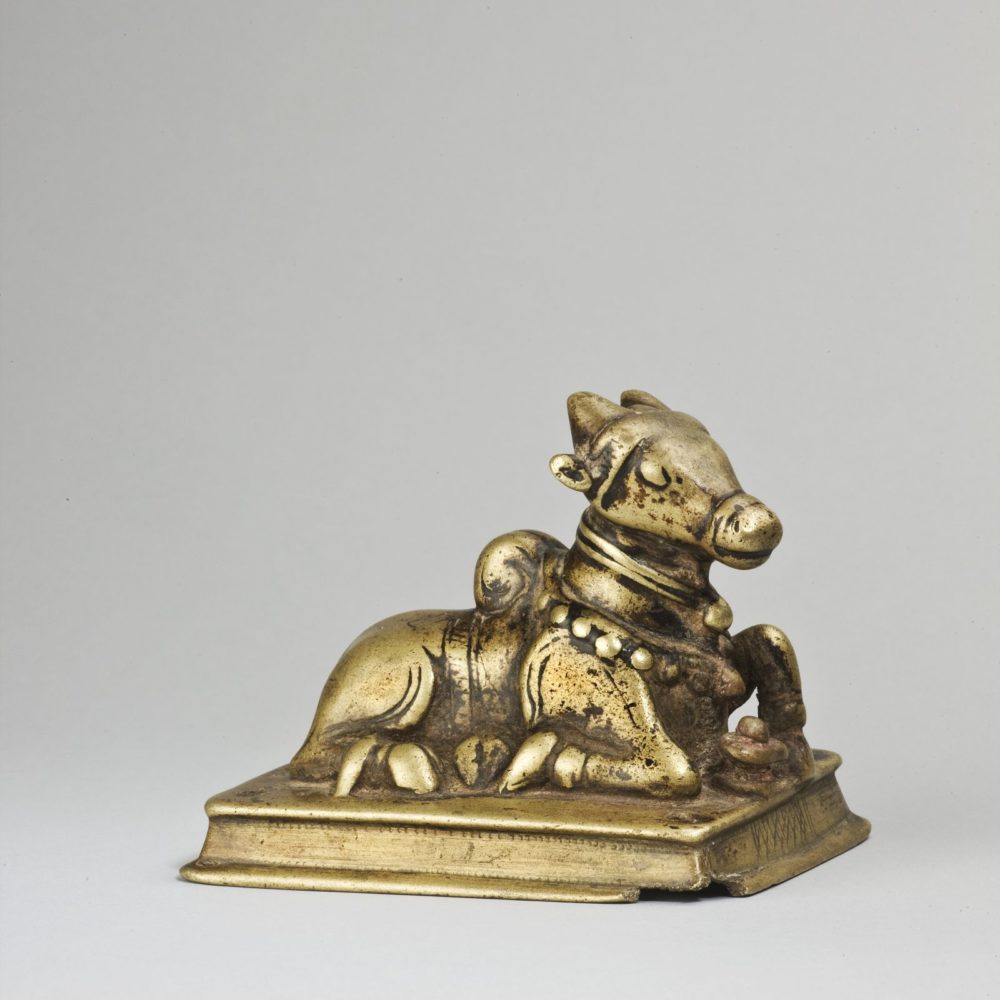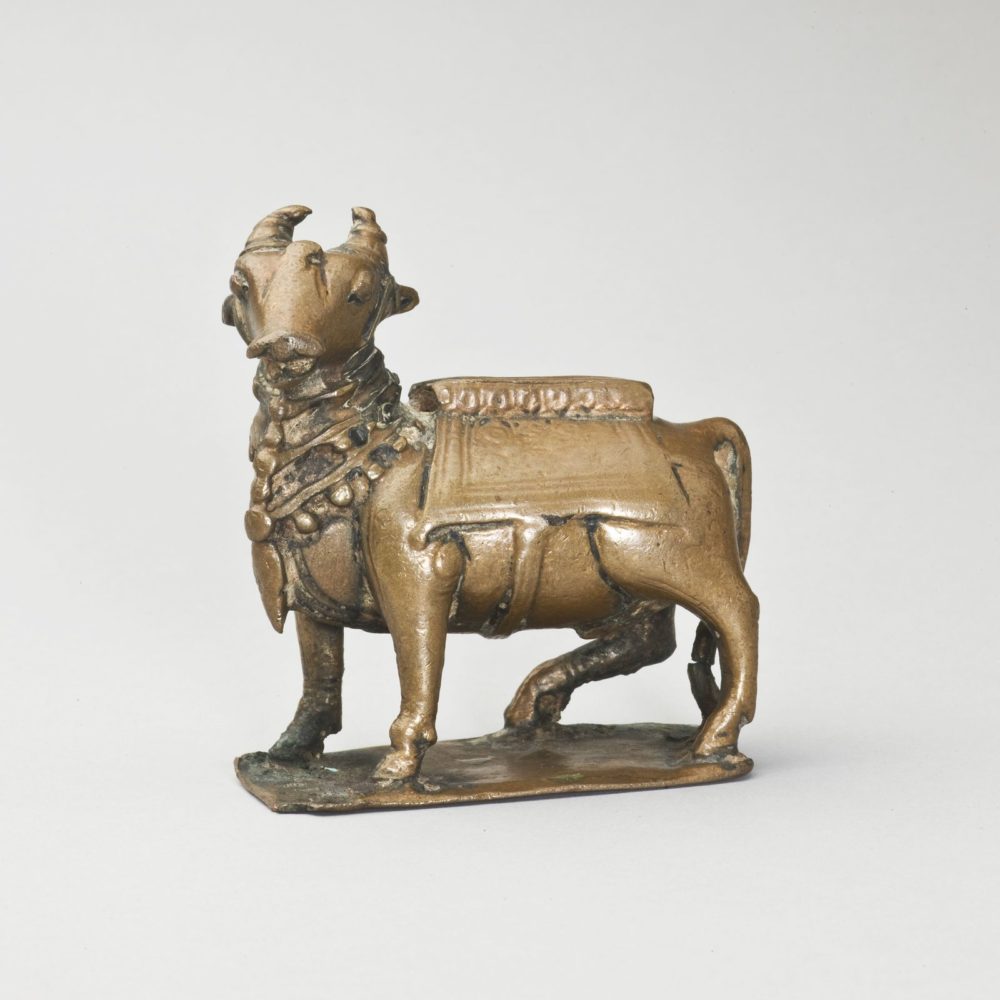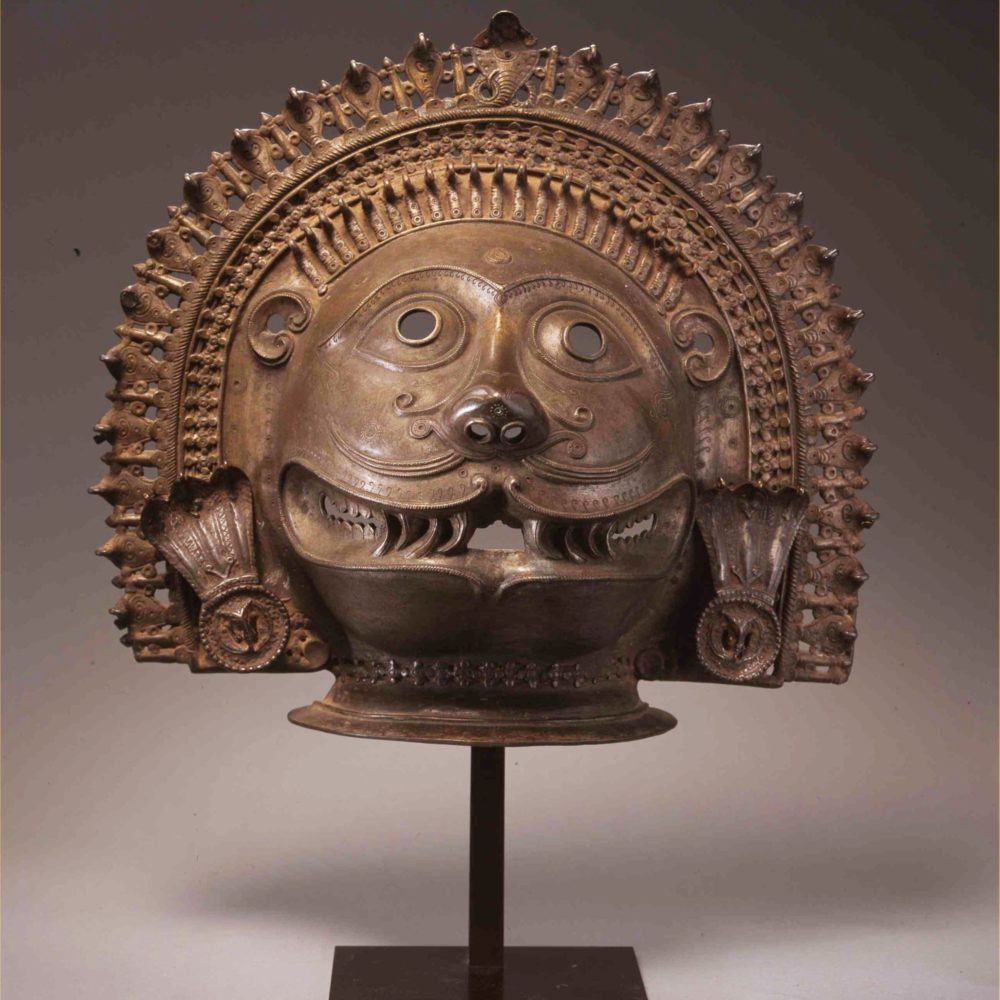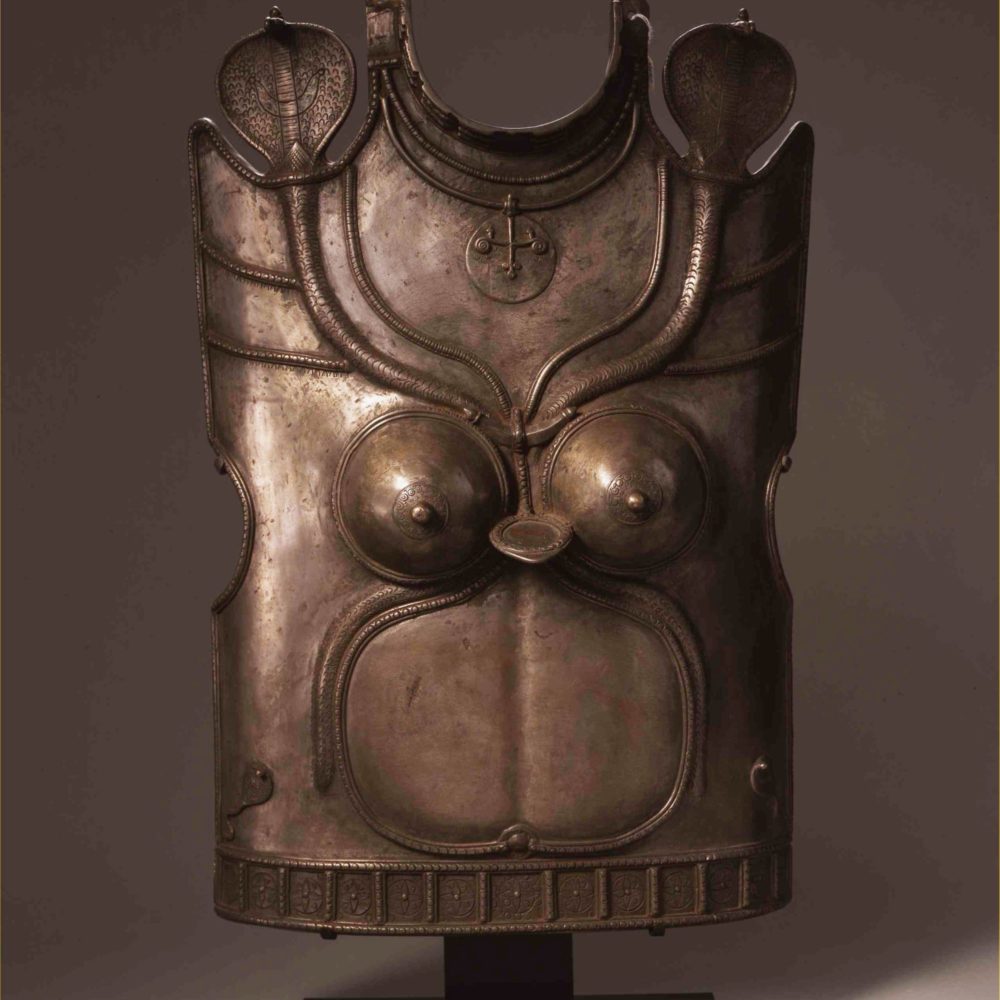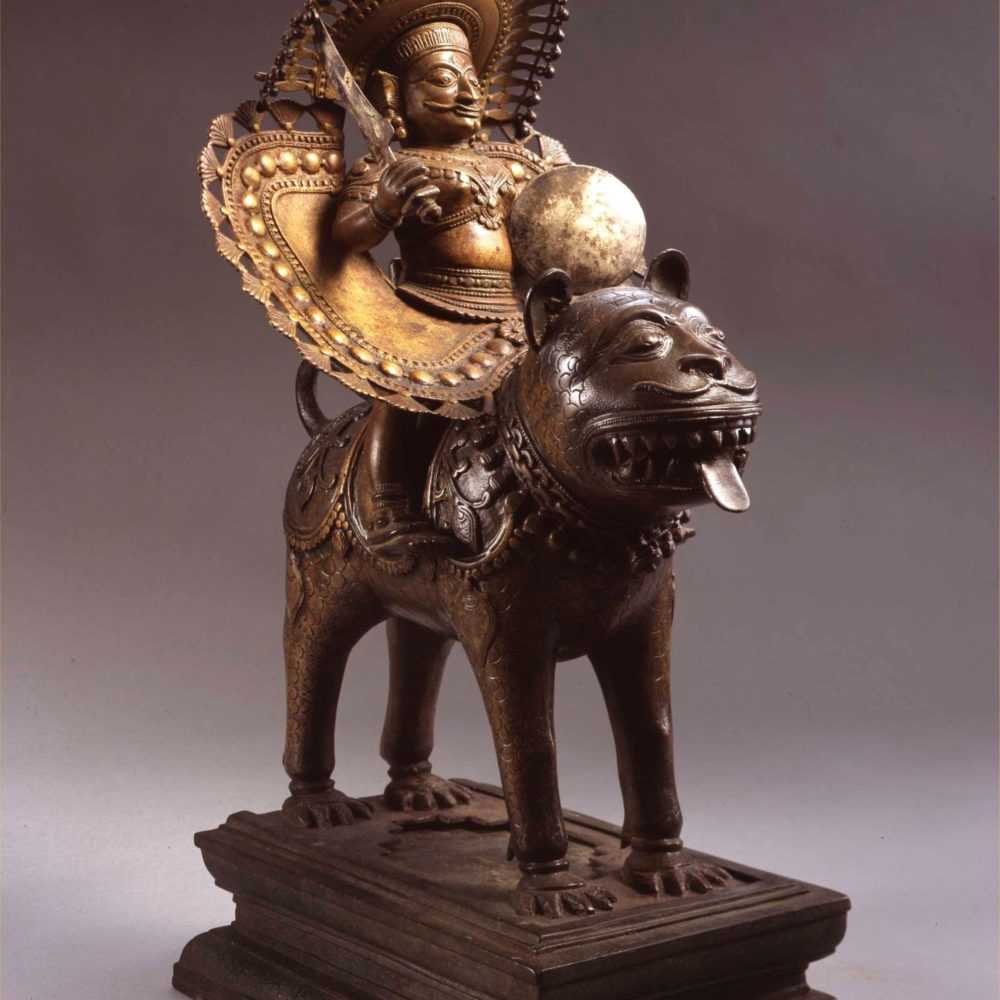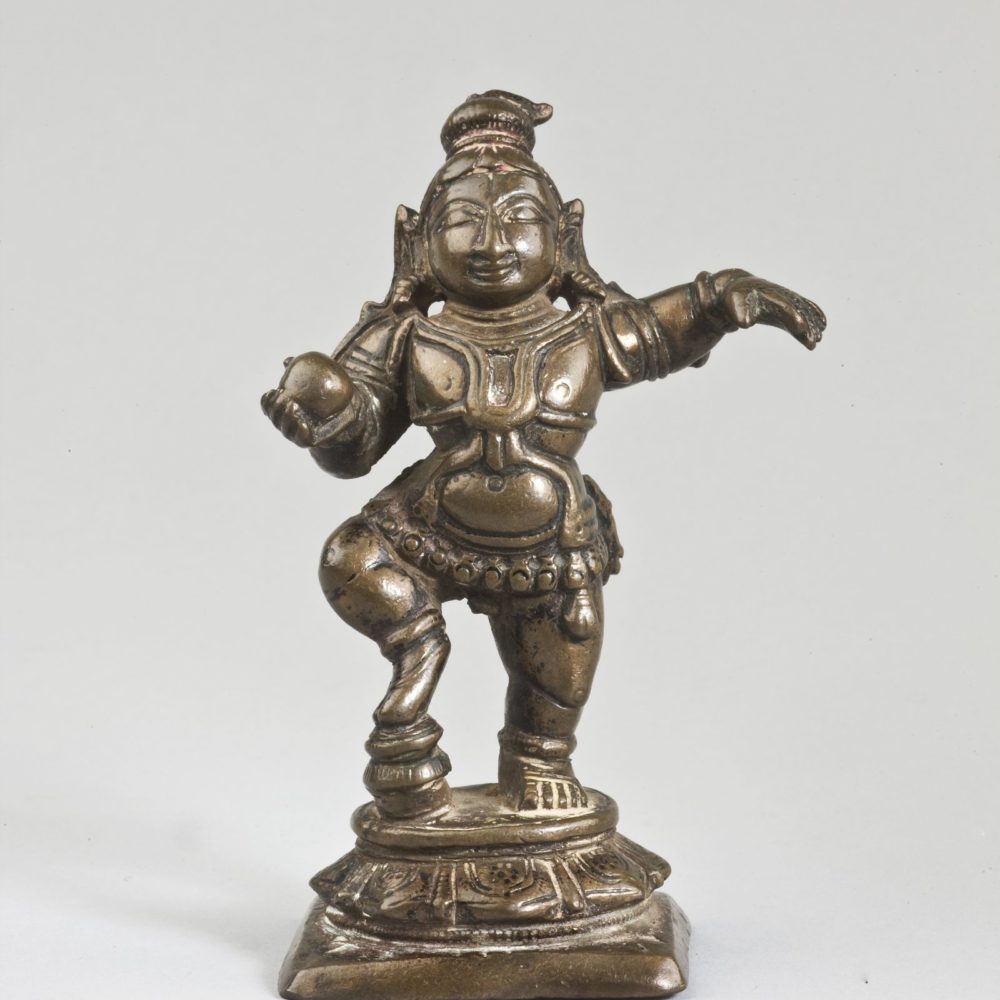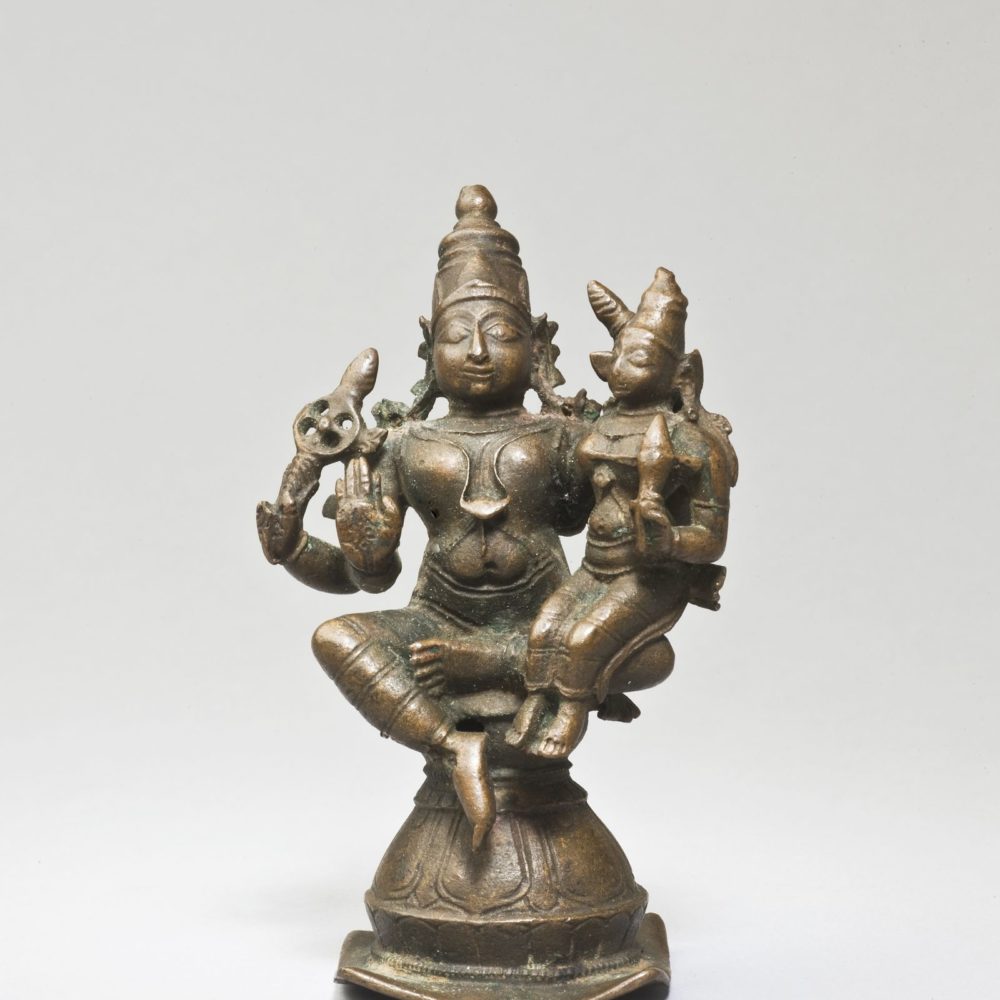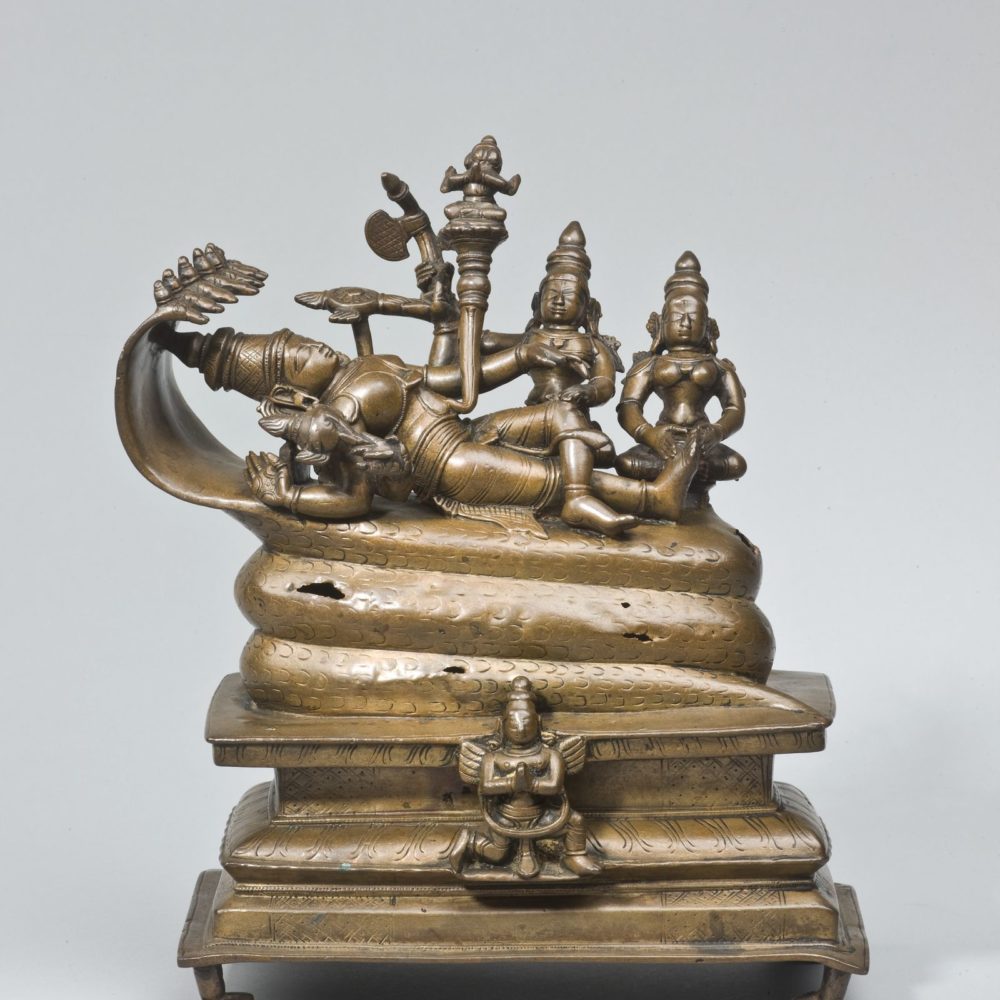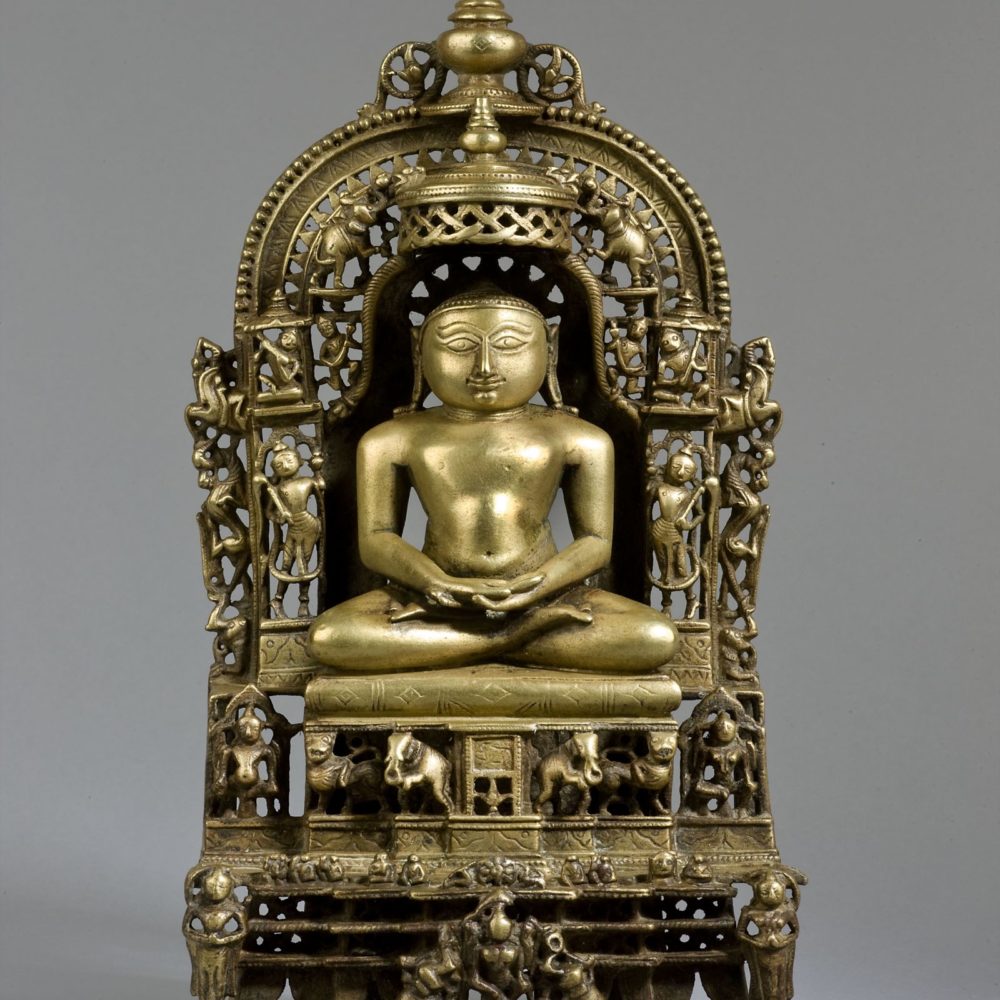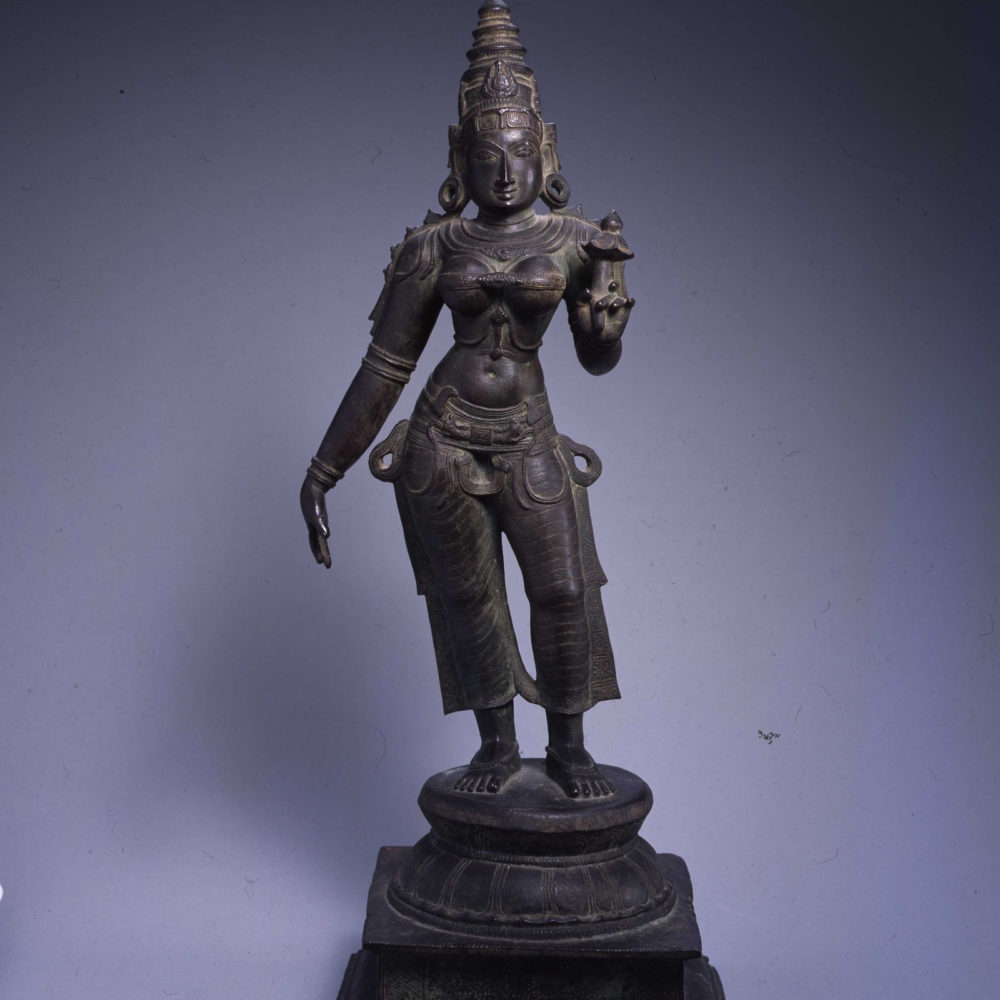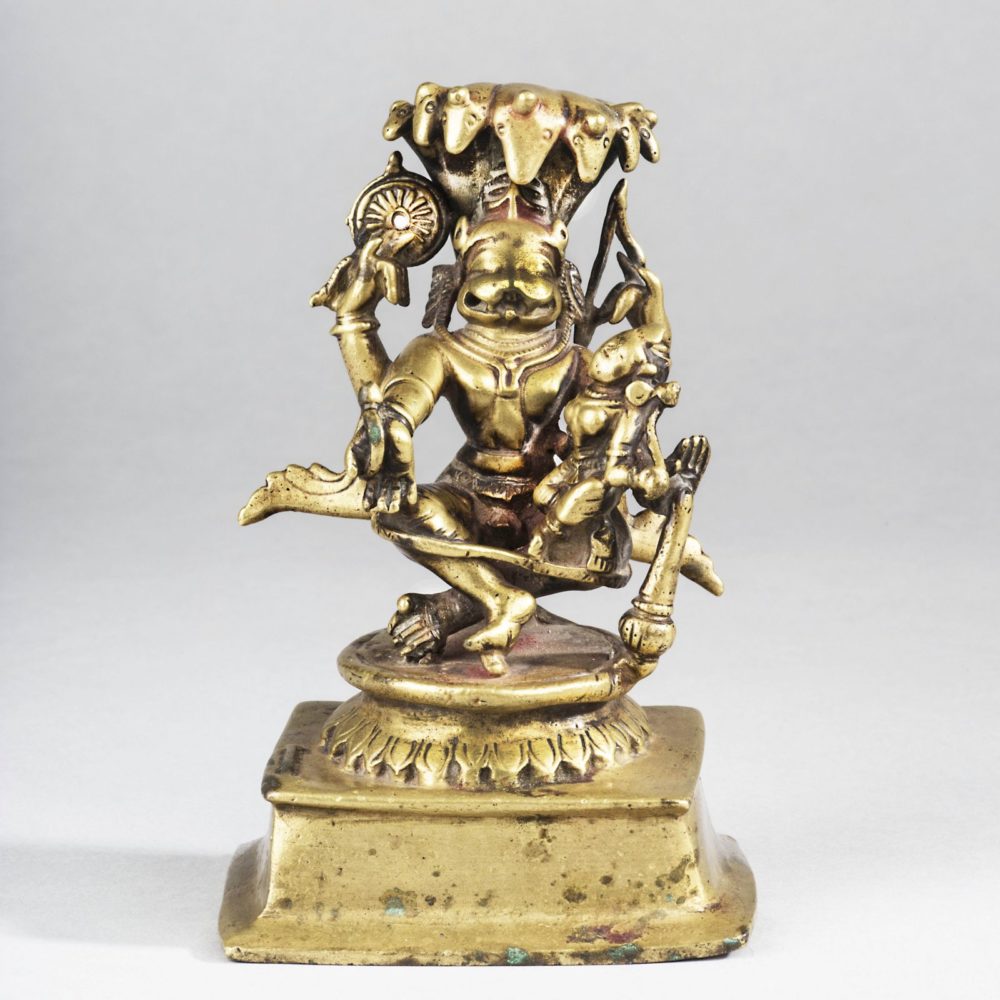A Bronze Altarpiece with Jina Vimalanatha
15th century, Western India
Height: 29 cm, 11.42 inches
This sculptural assemblage features the thirteenth of the twenty four Jinas of our world cycle, Vimalanatha, identifiable by the boar incised at the centre of his throne, between the pair of elephants. Jina is also known as Tirthankara or ford-maker as, according to Jain belief, they succeeded in crossing over life’s stream of rebirths and has made a path for others to follow. Vimalanatha is seated in meditation on a cushioned throne with a row of five incised lozenges below, at which an array of figures is assembled. Sanmukha (or Chaturmukha) yaksha and Vidita (or Vairoti) yakshi, the messenger divinities associated specifically with Vimalanatha, are seated on each side of the throne. Between them a pair of sprightly elephants and lions support the throne.
The central figure is seated under a compact triple parasol with a zigzagging fringe and a finial in the shape of a kalasha vase, and surrounded by a prescribed combination of celestial figures. He is flanked by a pair of flywhisk bearers, and flying over them are celestial musicians and garland bearers, who are in turn surmounted by a pair of heavenly elephants. The latter are customary in such Jain altarpieces as they lustrate the Jina from above. Vimalanatha has large incised almond-shaped eyes, a very low ushnisha and an openwork stellate nimbus, which is typical of twelfth to fifteenth century devotional sculptures from Gujarat.
On the top of the plinth are cursory renditions of the navagraha (the nine planets deities) in two groups- one of five and the other of four; between them a pair of deer flank a wheel in a popular northern Indian combination referencing the teaching of the Jinas. The plinth is cast with three-letter script at the right end and one set of footprints at the left.
At the lowermost part are stylized effigies of the donor and his spouse standing at each side of the base while a third figure in the centre accommodated in a small shrine and flanked by elephants is perhaps Vimalanatha’s protective goddess.
All elements are arranged within an almost perfectly symmetrical composition, bordered by the elephant protomes, rearing horned leonine figures (uyala), makara and surmounted by a kalasha-shaped finial. There is a lengthy description on the reverse.
The geometrical and abstract appearance of the imagery as well as the semi-circular arch are characteristics of the late type of Jaina bronzes, which suggests the present piece was produced not earlier than fourteenth century.
Similar Examples
A Jaina bronze shrine in V&A, dated in 1515 from Gujarat, shows the similar composition and design, but the less refined modelling suggests the later date than the present piece. Museum no. IM.3-1939
Click here to see more information.


